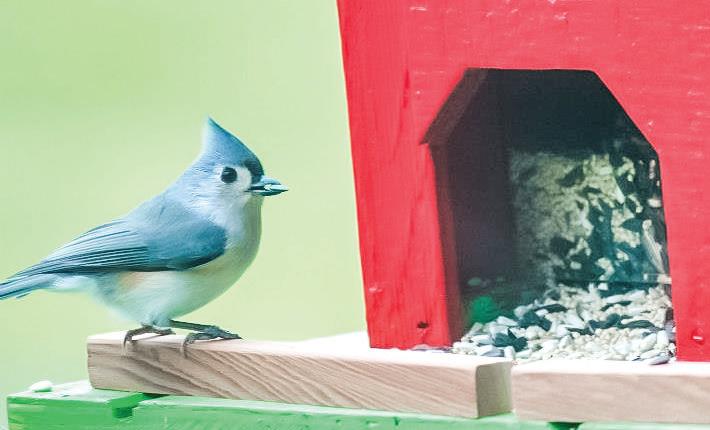












• Kitchens
• Bathrooms
• Space Additions
• Garages
• Deck & Screened Porches
• Basements


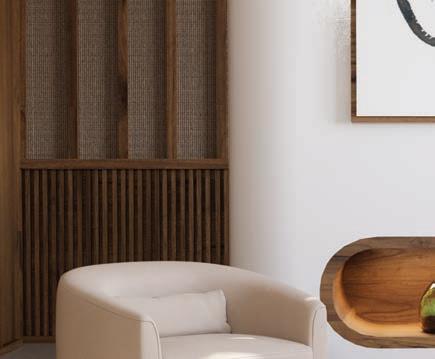
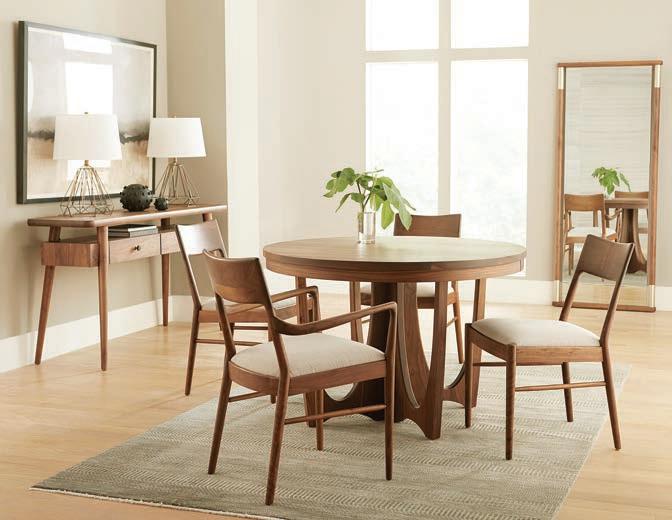



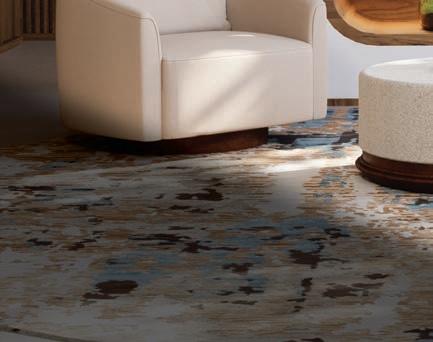


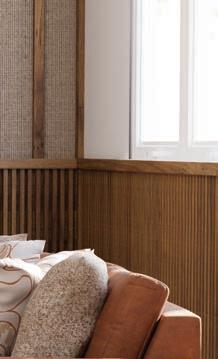


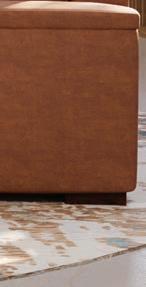







Local decision making & quick execution
Medical* & Executive Programs that can include up to 100% nancing and no PMI upon quali cation
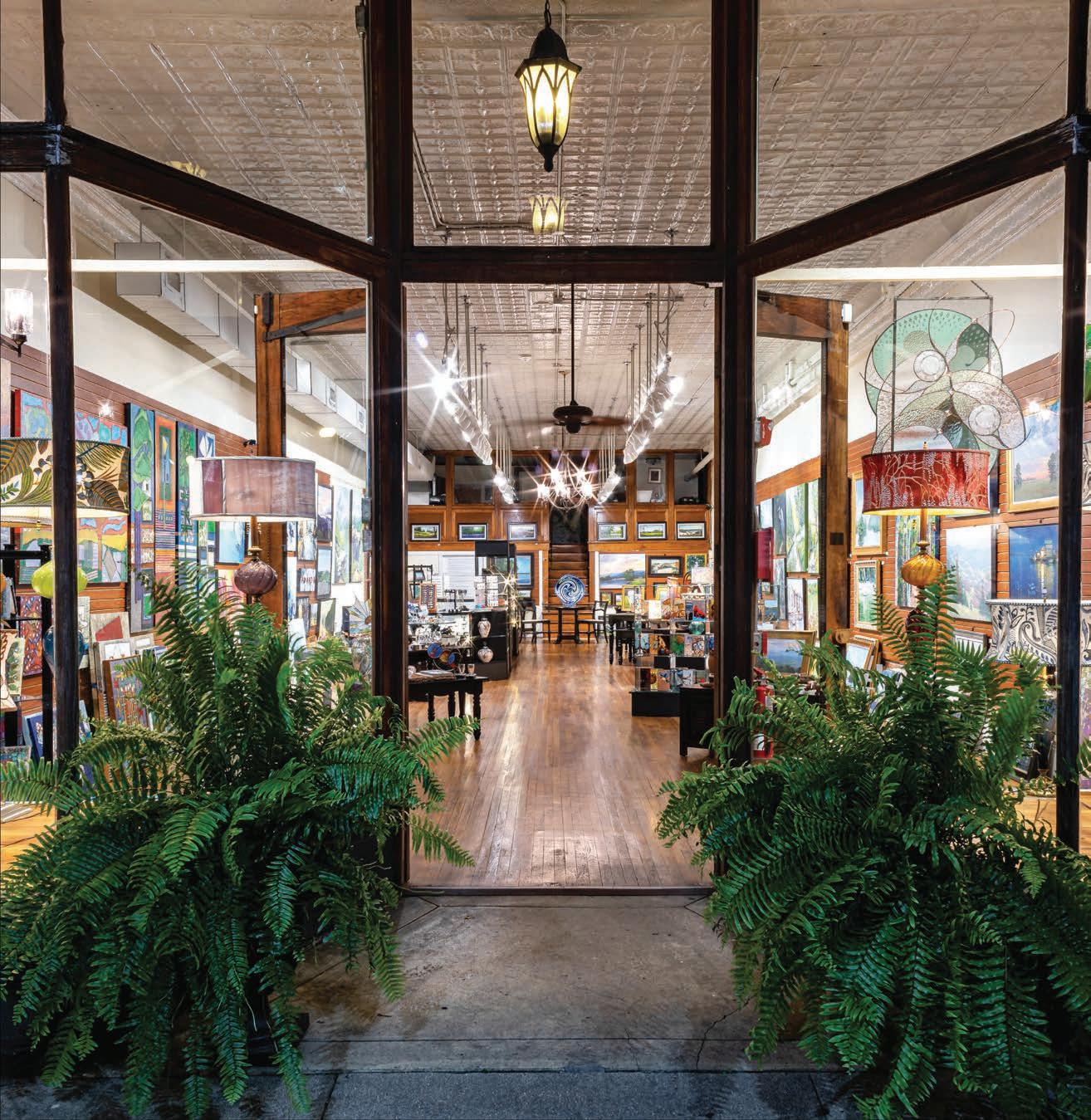


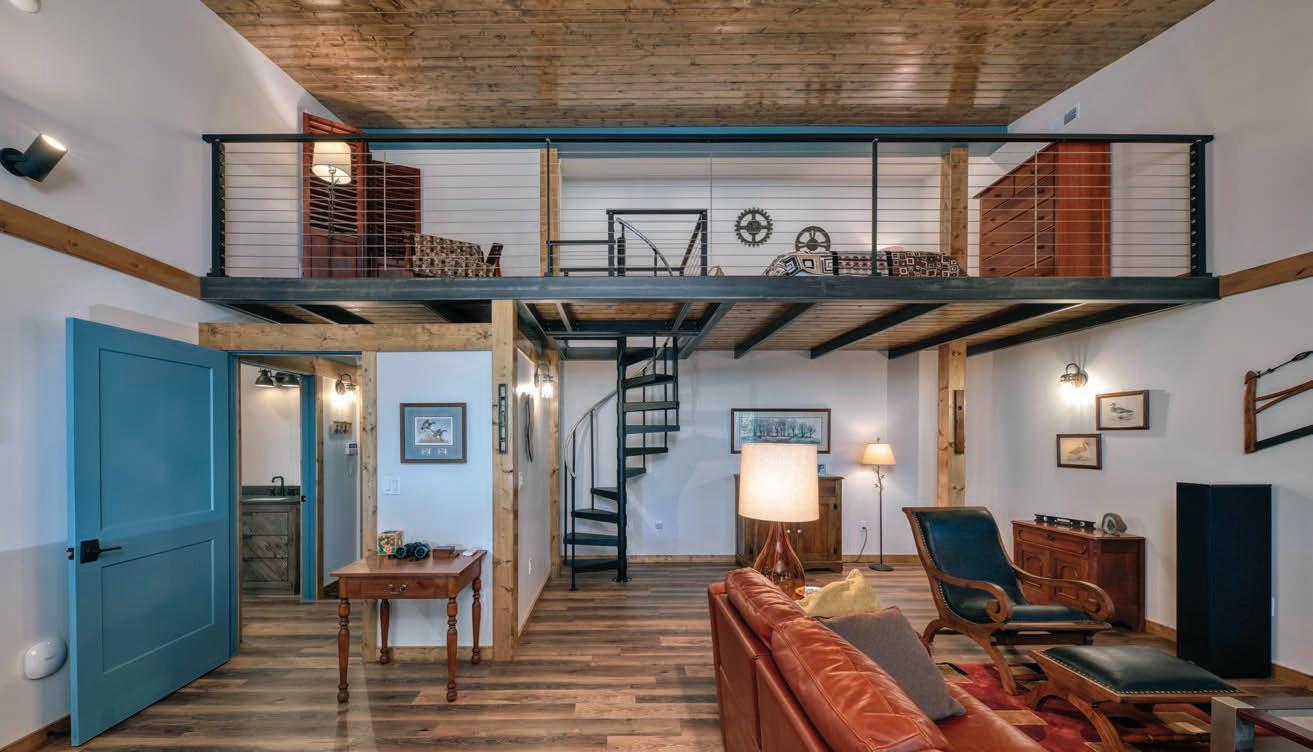










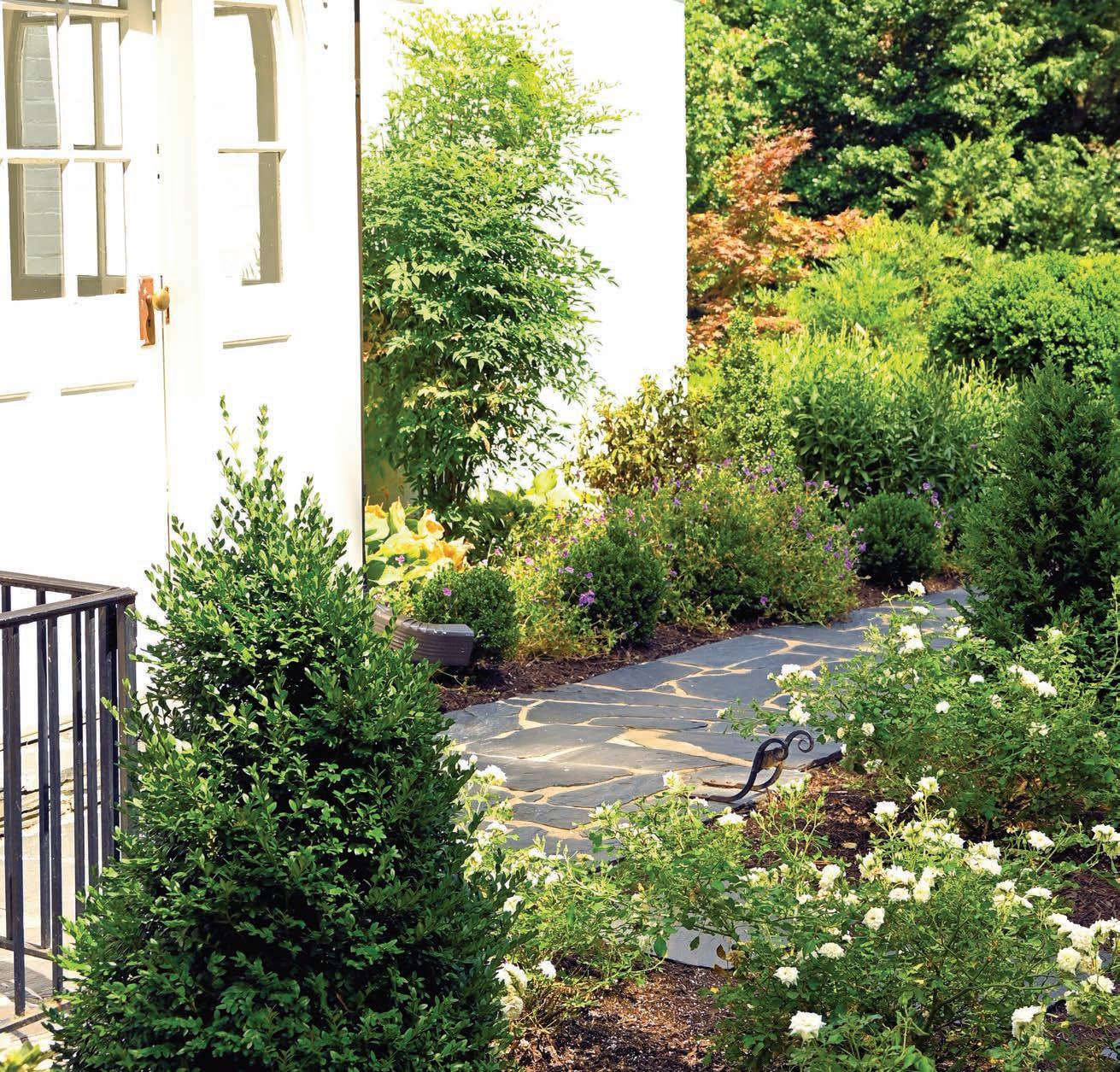




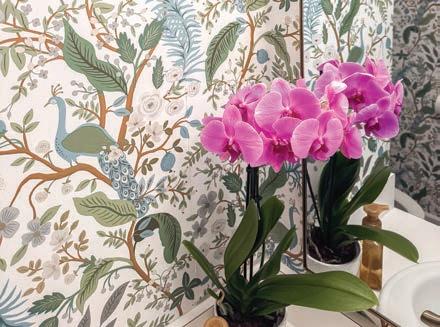
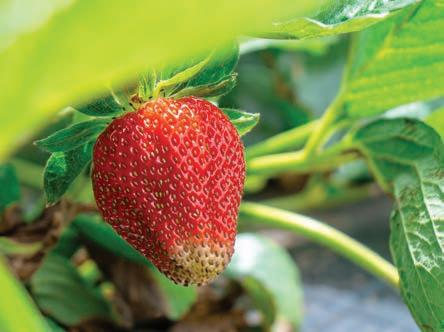






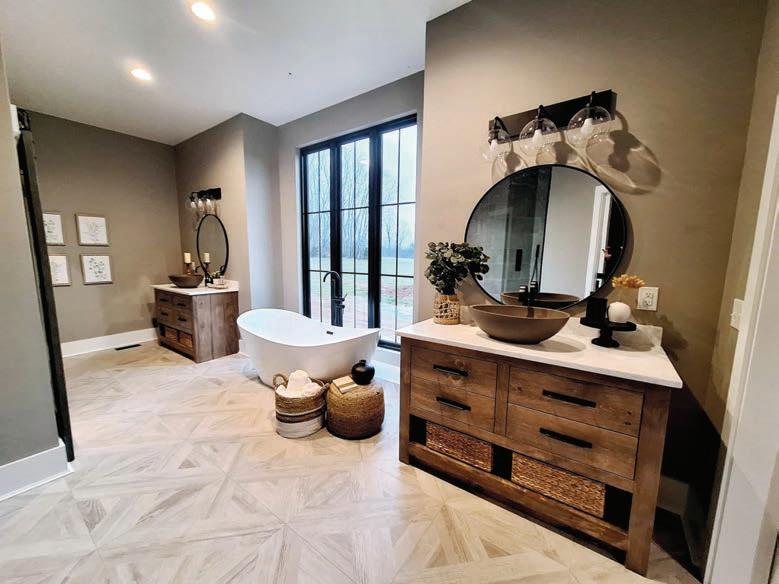
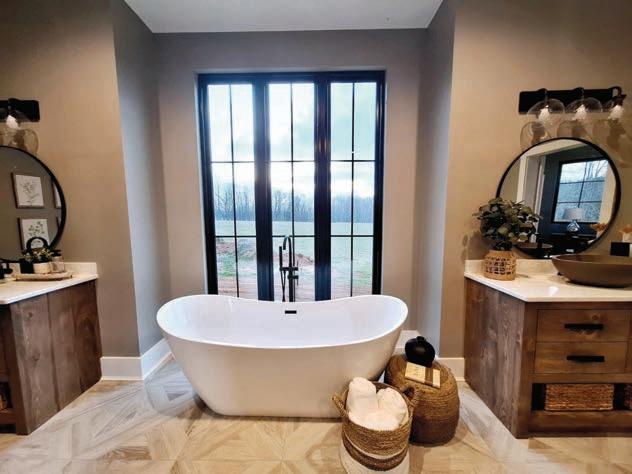


By the time you hold this in your hands, I hope to be in Georgia watching my son graduate from Army Advanced Individual Training (AIT) and celebrating my daughter’s 19th birthday, as she nears the end of her first year of college. This past year has brought so many changes for our family — both wonderful and hard — including losing my father after a long journey with Parkinson’s Disease.
Spring reminds me that with each new season, there is new life and new hope. And more things to store away!
My basement is now filled with totes of things my son needs to store while he’s in the Army. We’ll soon have more containers filled with items from a college dorm (bring on those XL twin sheets!). I’ve also been collecting many mementos from my father’s life. Each time I’m at my mother’s house, she has another little bag of sweet memories — a wellworn hat, a Member’s Only jacket, a Parent’s Weekend Guide from the 1990s.
We all face the dilemma: what to keep and what to let go. I appreciate Laurel’s article on where and how to donate to local organizations that benefit our community. That’s a real winwin as we spring clean.
Making better use of our closets is another solution. Kate talks to local experts on how to make the most of these spaces.
When you have finished your spring reorganization, you might be ready for a refresh. Check out Martha’s article for some

simple — and more robust ideas! You might like to start with a mood board. Or by checking out the latest wallpaper trends. If you’ve had enough of cleaning and decluttering, get out of the house, and go pick some strawberries!
Plant some early bloomers in your yard. Or go on the Historic Garden Week Tour in Roanoke. The HOME team will also be at the tour headquarters, located at Church of the Holy Spirit, on the day of the event. Please come by and say “hello”!
Also, don't miss our showcase home: The Ballengers have imbued their home with local art and creativity. While this gorgeous Tudor home has evolved through the years, it also remains timeless.
Make the most of this beautiful season. While change doesn’t stop, you can certainly stop and smell the hyacinths along the way!
Donna Dunn | donna@jamesrivermedia.com



VOLUME 1 8 ISSUE 2
PUBLISHER
Trish Roth
EDITOR
Donna Dunn
ART DIRECTOR
Kira Rider


CONTRIBUTING EDITOR
Katherine Fulghum Knopf
CONTRIBUTING WRITERS
Mitzi Bible
Becky Calvert
Martha S. Coffey
Kate Ericsson
Laurel Feinman
Katherine Fulghum Knopf
Margie Lippard
Kendall Atkins Livick
Christina Moore
Ashley Blair Smith
Ginny Smith
Ryan Tipps
PHOTOGRAPHER
Kathryn Feldmann
GRAPHIC DESIGNER
Donna Collins
SALES DIRECTOR
John Mazzei
ADVERTISING SALES
Kirsten Morey Becker
Lisa Bowers
Reid Ebert
Stephanie Ragsdale
Kenny Shelton
SUBSCRIPTIONS
Roanoke Valley HOME is published five times annually by James River Media, LLC. For an annual subscription, please send $20 and your name, address and telephone number to: Roanoke Valley HOME
109B Tradewynd Drive, Lynchburg, VA 24502
For advertising information please call (434) 845-5463 or email sales@jamesrivermedia.com.
To discuss coverage of an event relating to home or garden, please contact Roanoke Valley HOME at home@jamesrivermedia.com
JAMES RIVER MEDIA, LLC (434) 845-5463
Copyright 2025 by James River Media, LLC. All rights reserved. No part of this publication may be reproduced or transmitted in any form or by any means without written permission from James River Media, LLC. All pictorial material reproduced in this magazine, whether in a produced ad or by itself, has been accepted on the condition that it is with the knowledge and prior consent of the photographer or the artist concerned. As such, James River Media, LLC is not responsible for any infringement of copyright or otherwise arising out of publication thereof. The information contained herein has been obtained from sources believed to be reliable. However, James River Media, LLC makes no warrant to the accuracy or reliability of this information. Opinions expressed in this magazine are those of the authors and do not necessarily reflect the opinions of ownership or management.

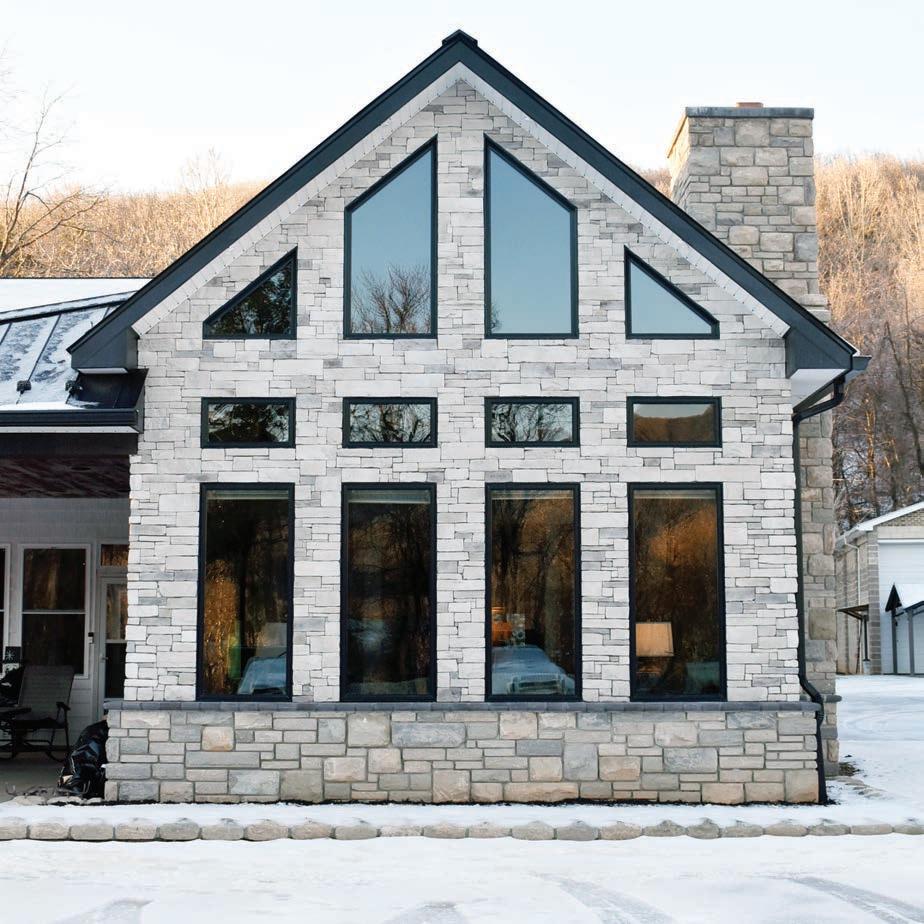
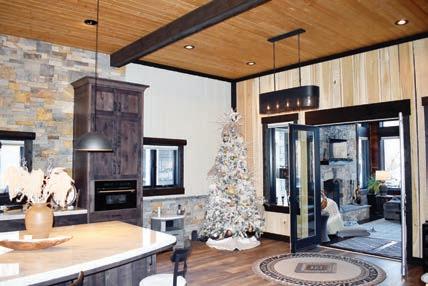
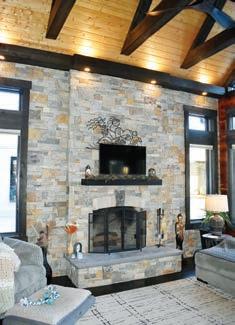



BY GINNY SMITH




reminder of nature’s resilience, early bloomers break through the cold bleakness of the winter months to celebrate the welcome arrival of spring. With pops of color, early-season flowers, shrubs and trees provide the hope of warm weather and blue skies. Colorful blooms promise that days spent outside in the fresh air are just around the corner.
Two of the earliest bloomers in Central Virginia are snowdrops and crocuses. You may have seen snowdrops with their white petals hanging down from the stems as early as January and February. They grow well in partially shaded areas and return each year. Likewise, crocuses — members of the iris family —
popped their way through the snow and frost in late February or early March. With a sweet fragrance, the blooms on these small flowering perennials last about three weeks. Fortunately, crocuses are usually safe from the ravages of deer.
Bloodroot revealed itself in late February/early March. Found mainly in woodland settings, this white flower has gold stamens and reddish sap in its roots. A shady environment is perfect for this native wildflower.
Lenten roses are evergreen perennials that bloom in late winter and early spring. They can even tolerate a late-season snow. Perfect for yards and gardens, Lenten roses self-seed, so they can spread out to fill an area. Clumps of the roses can be divided after the spring blooms fall. They grow best in indirect sunlight but can tolerate limited amounts of sun.

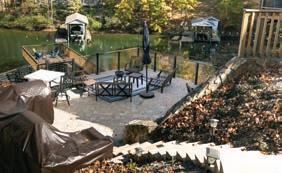
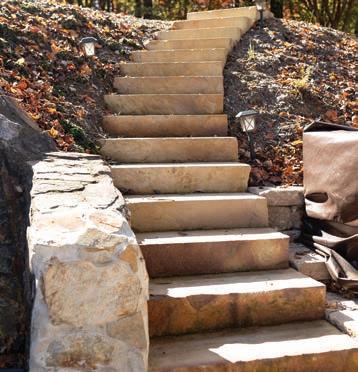
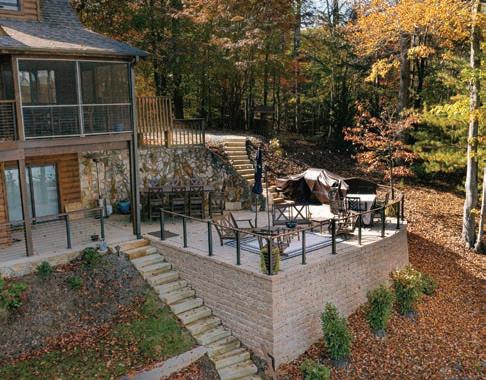
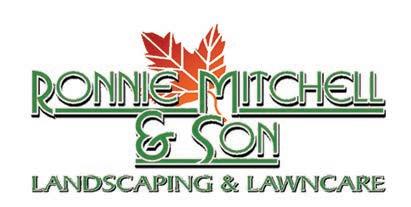
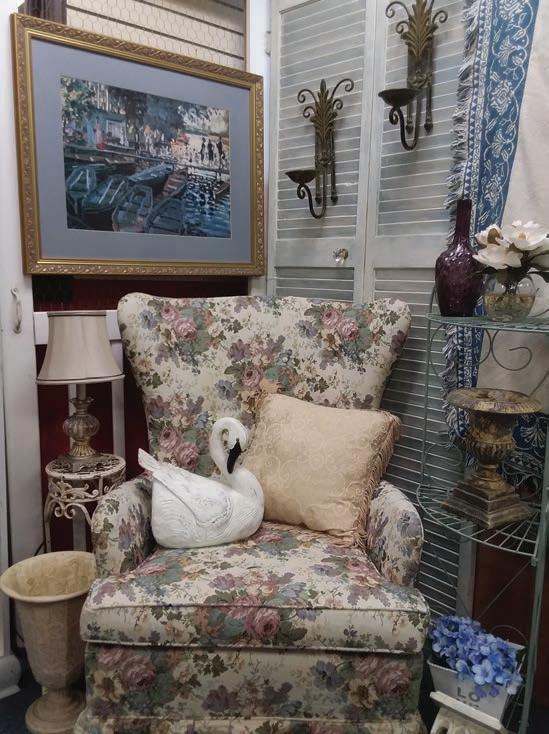





As winter wanes, the range of bloomers expand. Little dots of color and fragrance remind us that spring is just around the corner.
Forsythia, a shrub known for its vibrant yellow flowers, blooms in the spring before the leaves appear on the trees. Easy to care for, forsythia grows well in the shade and in the sun. The best time to prune this eye-catching shrub is just after the flowers drop.
You probably noticed tulips, daffodils and hyacinths showing off their vibrant colors in late March. Easy to grow, tulips are found in many colors and sizes. The charming, cupshaped flowers simply need full sun and well-drained soil.
Daffodils, known for their bright yellow, white or orange blooms, also prefer full sun and well-drained soil. These beautiful flowers have a peak season of early March to early May. Deer usually avoid daffodils and other flowers with strong scents.



Hyacinths are perennials that prefer full sun. Purple, pink and white blooms each have their own unique scent. A healthy hyacinth flourishes in full sun. Deadheading, removing the spent blooms, enables the plant to continue growing.
Native to Virginia, the bluebell or cowslip, blooms for about three to four weeks in March or April. Amazingly easy to grow, bluebells are shade-loving flowers that spread out quickly. Late summer pruning encourages healthier growth.
A sure sign that spring is approaching: the redbud trees begin to bloom. With bright pink flowers nestled on the branches, redbuds are a wondrous sight as we move from the dull landscape of winter to the glorious colors of spring.




Spring has sprung!
Now that spring has arrived, we see a full spectrum of blossoms.
Snapdragons are early spring flowers known as hardy annuals. Easy to grow from seeds, snapdragons mature quickly. Averaging from 6 inches to 4 feet, snapdragons are perfect for cutting flowers. They do well in full sun. Bumblebees and hummingbirds love snapdragons!
Cherry blossoms usually bloom the last week of March or the first week of April, depending on the weather. Usually, three to four days after the peak bloom, these trees will quickly drop their petals, and green leaves will appear. The National Cherry Blossom Festival in Washington, D.C., will take place through April 13. This citywide celebration commemorates the 1912 gift of 3,000 cherry blossom trees from Japan.
Bleeding hearts look best in late spring and early summer. Named for their heart-shaped blooms, bleeding hearts flower for 4 to 6 weeks in late spring. Most perform best in partial
shade. These flowers are self-seeding, so they spread nicely as a border or edging but are not overly aggressive.
Pansies are cheerful flowers that are fast-growing and can spread out nicely. With a little bit of work, pansies can make a show all summer long. Deadheading is important with pansies, so regularly pinch off the spent blooms to encourage more growth. Pansies are perfect in large pots or as edging.
Violets are similar but somewhat smaller than pansies. They, too, bloom abundantly and can continue to bloom through the summer. Violets come in a wide range of colors in combinations of blue, purple, yellow and white.
As winter fades into spring, the emergence of early bloomers to usher in the warm weather is a reminder of the resilience of nature and of our own resilience. As we celebrate the change of seasons, the warmth and beauty of spring unfolds and opens our eyes to a glorious new time of year. ✦


BY MARGIE LIPPARD
With a storied history spanning centuries, wallpaper is experiencing a renaissance in interior design. Even the avante garde Rhode Island School of Design Museum has mounted a 2025 spring exhibition entitled “The Art of French Wallpaper Design.” The collection showcases more than 100 pieces of antique French wallpaper made by wood-block printing, a craft perfected by William Morris, the prolific 19th century English designer.
Morris’ renowned botanical and floral patterns inspire today’s innovative American designers and manufacturers like Schumacher, Thibaut and York. What to expect from these trendsetters in 2025? Look for gorgeous wallpaper that boasts inviting textures, sustainable materials, bold colors and patterns and sweeping murals, often placed in surprising spaces. Whether traditional or peel-and-stick, wallpaper transforms rooms into ravishing works of art.
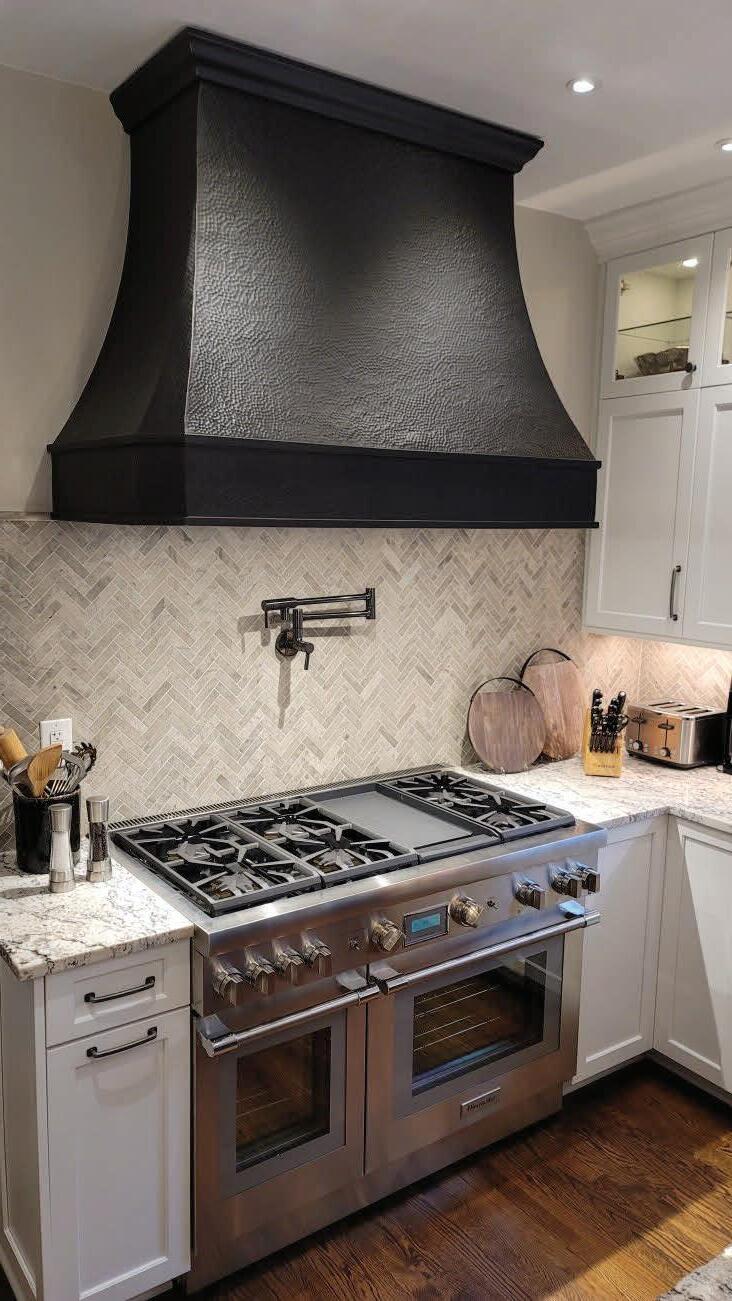
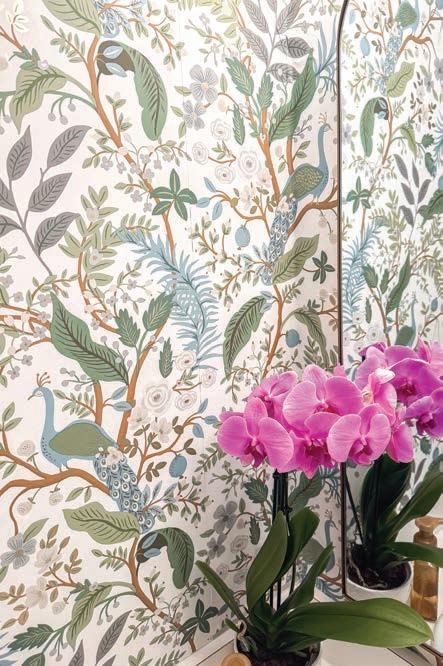
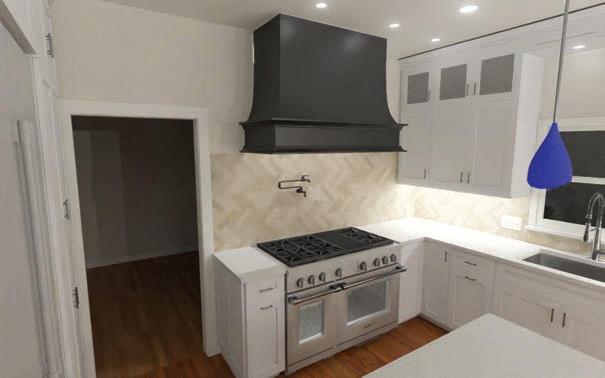
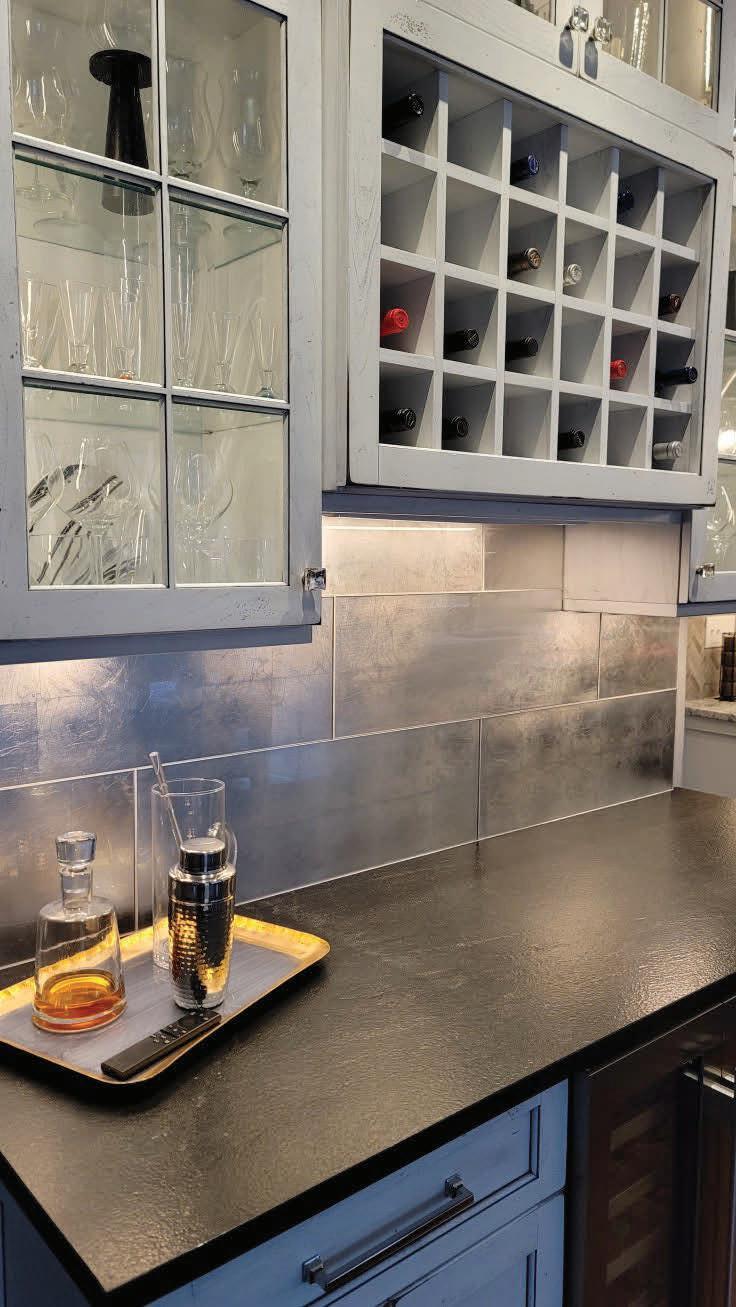

comeback
Jessica Durham, interior designer and co-owner of Magnolia along with her mother Lori Noonkester who founded the company in 2010, observes, “I think we are continuing to see people who love wallpaper. You have the Schumachers and Thibauts, but over the last several years, many artists have introduced their own line of papers. These smaller lines give a great look and are sourced by bigger lines.
“Now wallpaper is really coming back. It’s something that can bring a lot of joy.”
2025 wallpaper trends
INTERESTING ACCENTS
Wallpaper on accent walls, ceilings and other unexpected places makes an impactful decorative statement, yet it’s also cost-effective since you’re not covering up all the walls. Wallpaper with bold colors and patterns shine on accent walls, especially in the bedroom behind the headboard, but ceilings are beckoning as the “fifth” wall. Durham says, “I love ceiling covering. I see this in kids’ spaces. It’s a great way to keep walls simple and then do something bold on the ceiling. It’s a nice way to use the fifth wall.”
For nurseries and children’s bedrooms, whimsical patterns in soft pastels will charm your young ones and soothe them to sleep.
Wallpaper made from natural materials such as grasscloth, raffia and silk is an elegant classic. Grasscloth wallpaper has tonal nuances that infuse texture and warmth into a room. For Durham, grasscloth has always been a “staple, classic look” in dining rooms, living rooms and foyers. While textured wallpaper is a sophisticated backdrop for many rooms, it’s not a candidate for rooms with high humidity like bathrooms or laundry rooms.
Wallpaper made of natural materials and non-toxic inks are surging in popularity. Designers are seeking innovative ways to create beautiful wallpaper that sparks a feeling of well-being and preserves the environment. Biophilic wallpaper patterns of flora and fauna that invite nature into the home suffuse this style.

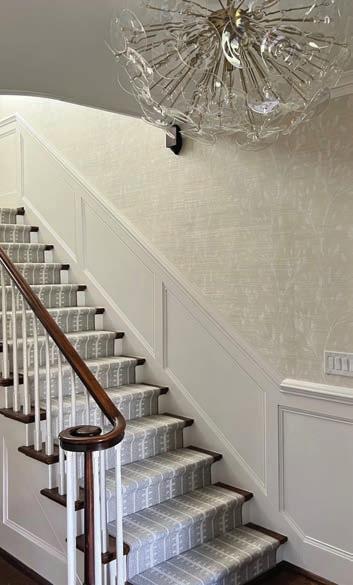


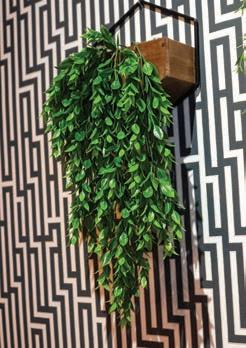

Bright colors and bold patterns are trending, but warm neutral tones are catching up. Durham explains, “I think you see both color and neutrals. The trend is turning to warmer tones like earthy tones, browns, grayish, beige and softer whites but with pops of color.” Exuberant patterns — large-scale florals and botanicals; dramatic geometrics, stripes and abstracts; exotic animal and tropical prints; trompe l’œil designs, and scenic landscapes — are enlivening spaces. Durham says, “I think patterns are making a big comeback whether it’s a floral or an abstract wallpaper. It looks like a painting.”
Most wallpapers have repeating patterns, but a mural enwraps a room with a sweeping wallcovering that paints a picture and tells a story. Durham says, “Murals are really having a comeback. I’ve seen gorgeous murals on one wall that look fantastic in dining rooms. People are liking traditional murals with really pretty countryside and classic landscape scenes. Some can be quite colorful while others have an antique older look. It depends upon the client and their style.” With the advent of digital printing, murals are more accessible, yet designers recommend that professionals install them. Durham concludes, “You need a wallpaper installer who knows what they are doing. It can be intricate.”


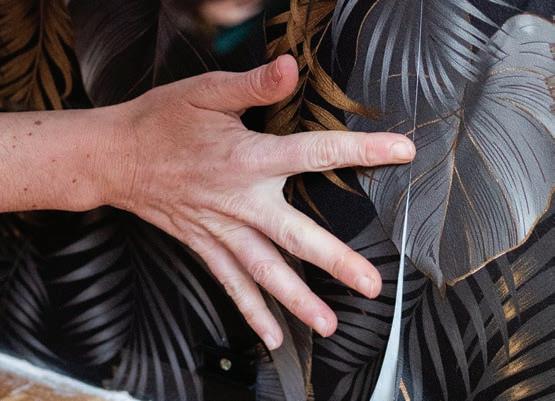

Wallpaper construction, installation & care Innovations in technology and design have introduced wallpaper options that appeal to professional and amateur installers alike. Whether traditional or removable, wallpaper construction follows these basic steps:
n Select a backing, which can be woven (fabric based) or non-woven (paper)
n Apply a colored background coating (latex for fabric, vinyl for paper) to the backing
n Imprint the pattern and ink through surface, gravure, digital or silk screen printing. The wallpaper then can be pre-pasted, dried and rolled.
Installation starts with deciding how many rolls of wallpaper you’ll need. A single roll is 25-35 square feet while a double roll is 57-61 square feet. To calculate the quantity of wallpaper rolls required for a room:
n Measure the height and width of each wall, including the doors and windows. You’ll need that to match up patterns.
n Divide the total area square footage by the square footage of one roll.
n Be sure to add an allowance for errors, repairs and extra coverage.


n Consider the pattern, as that may require some extra wallpaper to make sure everything lines up.
Priming your surface and preparing your wallpaper are critical for a successful installation. Installers emphasize that the most important step in preparing walls is to use a good primer. Once you’ve cleaned and primed your walls, prepare your wallpaper by “booking” it or folding it onto itself after you’ve pasted it. This technique avoids bubbles and creases during installation. Of course, peel-and-stick wallpaper does not require this step.
Wallpaper that is not pre-pasted will require a separate adhesive. Traditional wallpaper installation might be best done by a professional, unless you have experience in this area.
If your wallpaper has reached its lifespan or is showing flaws, most installers don’t recommend repapering or repainting. However, repainting grasscloth is an exception when an oilbased primer is used. Durham notes, “I wouldn’t recommend painting over most wallpapers, but grasscloth is different. If the paper is in good condition, it’s a great look to paint over. You still get the good texture behind it, but you get the new color.”
As the RISD Museum exhibit reminds us, wallpaper has an illustrious past, but its reign in the decorative arts endures. A timeless treasure, wallpaper still brings us joy. ✦















Virginia Furniture Market is
to
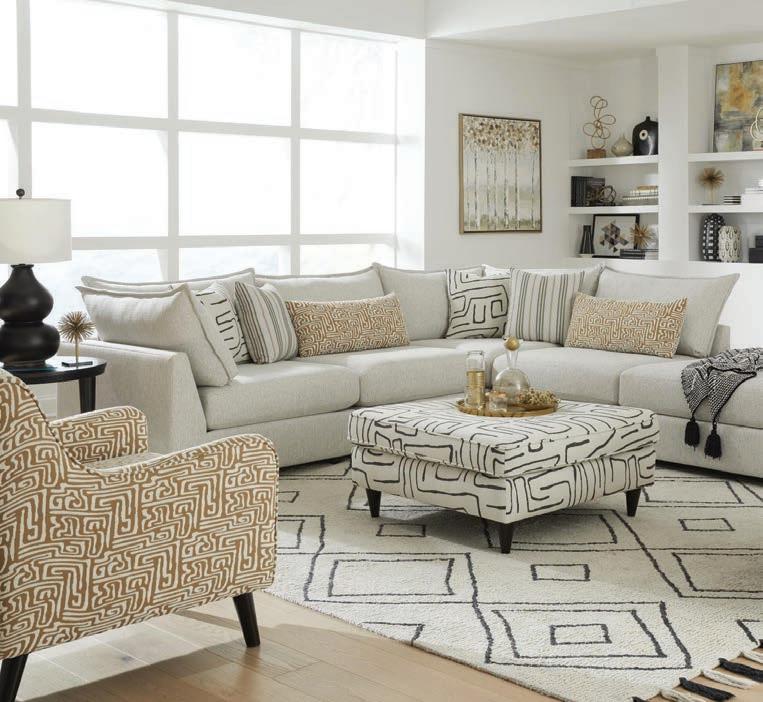

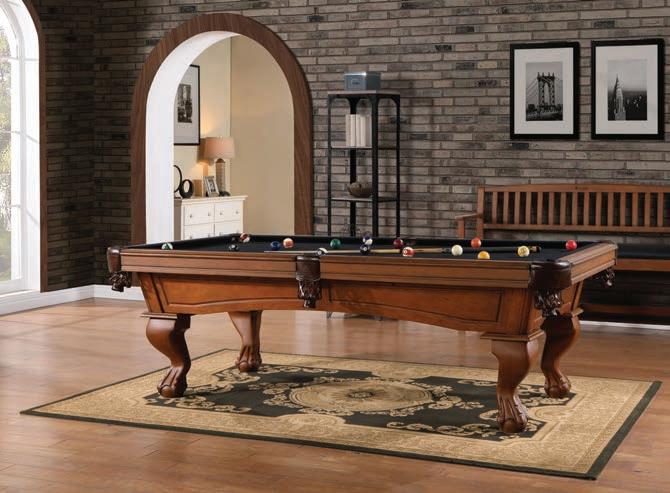
VFM BILLIARDS & MORE
2625 B Brick Church Road
This store features top-quality tables for pool, poker, shuffleboard & more, plus electronic games like pinball, skeeball and home theater seating. It’s the perfect place to elevate your home or vacation rental into a recreation haven.


2625 Brick Church Road
The 45,000-square-foot flagship showroom offers an unmatched selection of furniture for every room in your home. From luxurious living room sets to bedroom and dining collections, mattresses to outdoor furniture and more, this is where style meets comfort.
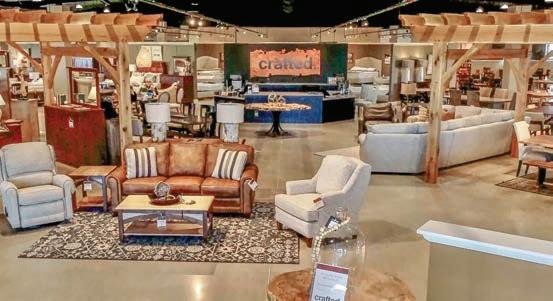
crafted. BY VIRGINIA FURNITURE MARKET
51 Virginia Market Place Drive
crafted. is the Mid-Atlantic’s largest Americanmade, handcrafted showroom featuring Appalachian hardwood bedroom and dining, along with an impressive selection of upholstered furniture. Enjoy a red-carpet shopping experience as you personalize your selections with complimentary in-store design services.
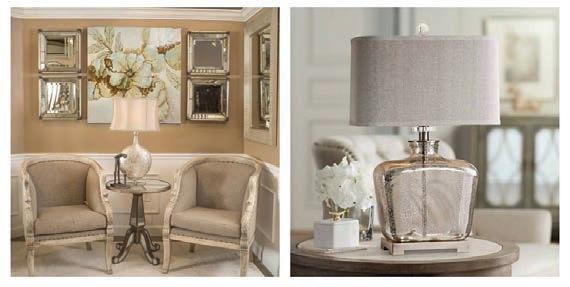
20050 Virgil H Goode Highway
The Decorator’s Outlet boasts the largest selection of distinctive accessories and home décor in the area, including high-end furniture at unbelievable prices.
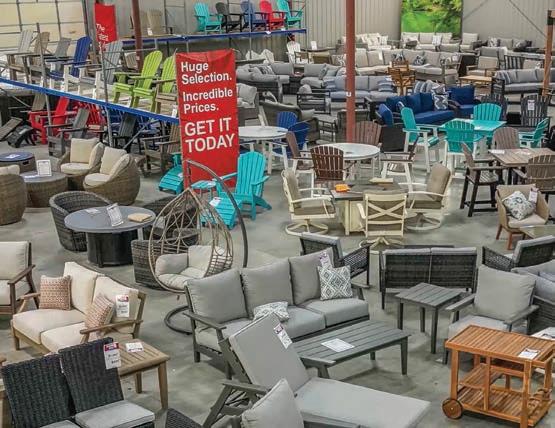
20100 Virgil H Goode Highway
This store offers an unbeatable selection and deals with 4 stores in 1. Last-chance deals in the Clearance Center, trendy kids and teens furniture, the East Coast’s largest outdoor selection, and the Warehouse Outlet with fresh daily arrivals and unbeatable value.
With five locations within a ½ mile in Rocky Mount, Virginia Furniture Market provides unmatched quality, selection and service. Their expert teams are ready to help bring your vision to life!
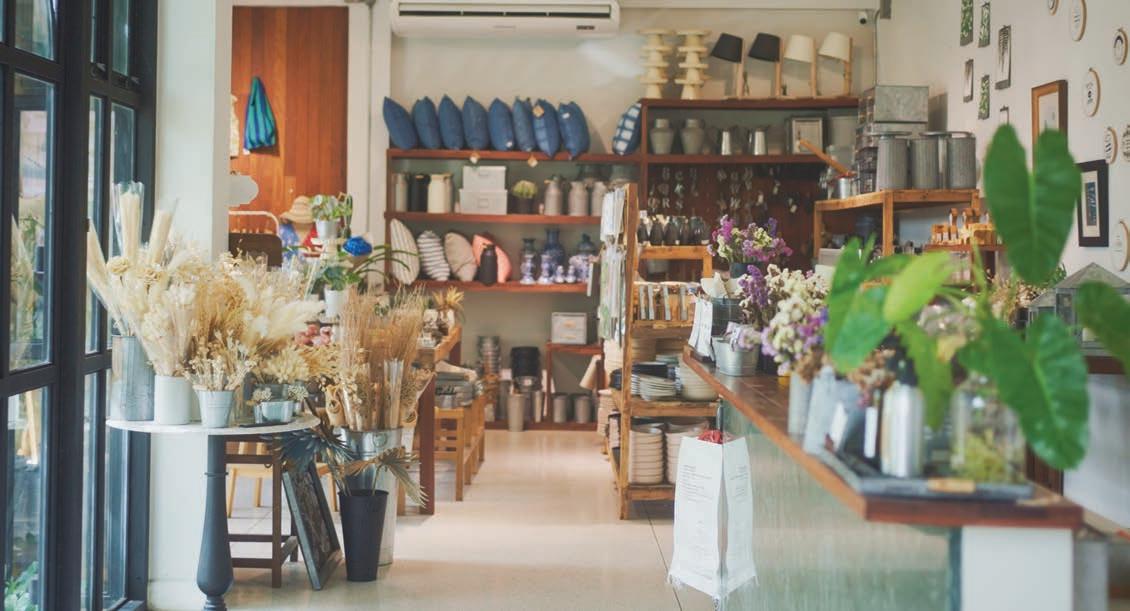
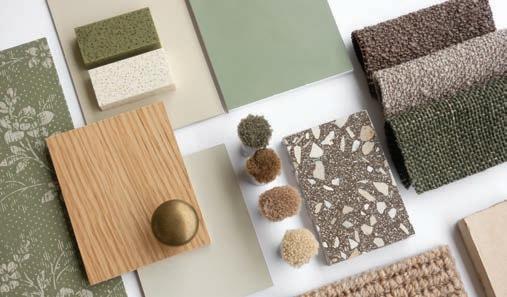

BY KENDALL ATKINS LIVICK
hat could be more gratifying than transforming a room in your house to match a beautiful vision in your mind’s eye? How about saving money while you’re at it? Budget-friendly design sourcing is a clever way to elevate your style on a dime.
A handy acronym (SHOP) trains the memory to embrace strategic saving tips. First things first:
n Create a vision or mood board on Pinterest or another chosen platform. Fill it with images that wow and delight your senses. See how to create a mood board on page 46.
n Make a master wish list.
n Finally, remember to SHOP to save.
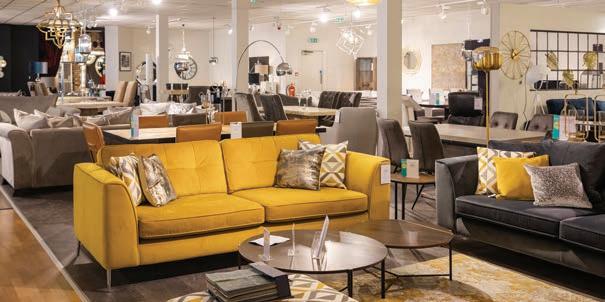
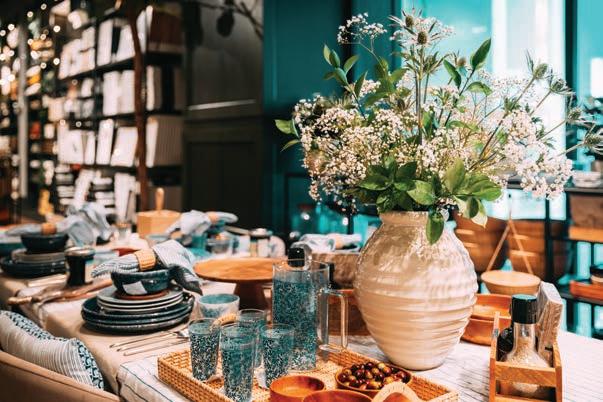

While some may brag about how much money they spend, frugal folks brag about how much they save! If you are in the latter camp, then you’re probably already a pro at money-saving hacks like shopping the sales, clipping coupons, sleuthing out treasures in discount and outlet stores and leveraging loyalty memberships.
But how can you be sure you’re getting more bang for your buck? With a little research, you can gain confidence in your bargains.
On a quarterly basis, it pays off to go on a browsing trip to your favorite home stores. Walk the aisles of various categories, snap a few pictures on your phone and make note of price ranges. Then when you find something on your wish list for significantly less, you’ll know you’re getting a deal.
Expert tip: The best bargains can be found once the ship has sailed. Just as half-priced flowers are on sale the day after Valentine’s Day, the time to buy patio furniture is when there’s a chill in the air. When demand is low, so are prices. During your quarterly browsing sessions, you might also want to check out the front clearance section of some of the big box stores and make your rounds to the local dollar stores. You’ll be surprised what you can snag in terms of knickknacks and accessories at the forefront of what’s trending.


REALTOR Licensed in VA
C: 540-525-1844 | O: 540-989-0863
E: SusanBailey@LongandFoster.com
W: LongandFoster.com/SusanBailey



A: 5324 Fallowater Lane, Suite 100 | Roanoke, VA 24014

Although seemingly the opposite of stretching a dollar, sometimes you have to spend money to save money. For example, when elevating your bedroom, you could opt for a trendy, yet inexpensive bedframe on Wayfair and head to a mattress clearance sale for the lowest possible price. Yet, a typical mattress has at least a 10-year lifespan. Your bedding setup affects your sleep quality, posture, health and daily energy. On the other hand, a little research can identify the finest organic mattress, free of toxic flame retardants, with the highest ratings for comfort. Add the support of a sturdy wooden frame, and you’ve got yourself a timeless choice to lengthen the product’s lifespan and support your vitality. You can’t put a price on that!
Expert tip: Investing rather than skimping in lifestyle support categories results in big savings over longer durations. Examples of prudent home investments are mattresses and bedframes, kitchen and bathroom renovations, dining furniture and cookware.
Honing your observation skills will boost your ability to notice fluctuating numbers.
Expert tip: Fill your Amazon/Walmart/Wayfair, etc. cart with your chosen items, and simply wait for them to come down in price. Check back once a week or so, and when you see a significant markdown, put in your order.
Whoever said new décor items need be brand-spanking new? Vintage and antique finds are one of the top trends right now, and for good reason. Aged items touch upon


that previously mentioned timeless element. As a bonus, secondhand shopping emphasizes frugality and sustainability. With your aesthetic in mind, your ultimate selections will come down to what you find in thrift stores, secondhand shops, estate sales, vintage markets, salvage yards and on Facebook Marketplace.
Expert tip: When it comes to deals on Facebook Marketplace, the early bird catches the worm. If you’ve been eyeing something specific, and you see a deal, the earlier in the day you can contact the seller, the better.
Bonus tip: Note red flags on Facebook Marketplace if:
n You see the exact same image listed by more than one account in your local area.
n The seller has a brand new account with no reviews or bad reviews.
n The seller asks for a “deposit” or full payment up front.
You don’t want to get scammed when trying to save!
Perusing used items can yield items specifically desired, as well as novelty discoveries. Salvage yards, for instance, offer unique light fixtures and rustic art installations previously used in commercial spaces. Talk about the thrill of the hunt!
Used items can sometimes require some TLC. By upcycling or adding your creative touch in the form of fresh paint, new cushions, patchwork fixes or elbow grease in the cleaning process, you become part of an artifact’s story.
Letter by letter, the SHOP technique, can elevate your style in a variety of budget-friendly ways. It’s all about patience and clever ingenuity. Now all that’s left to do is to pick a room, and take that first step toward transformation! ✦



BY KATE ERICSSON
Baskets, chests and armoires are some of the earliest versions of closets, dating back to Roman times. As industrialization happened across the world, people had greater access to more affordable goods and needed spaces in which to store them. In the 19th century, Americans established the closet as we know it — its own space built directly into the wall. These were small, usually the size of the door that opened into it.
Today, we are accustomed to larger fitted and walk-in closets in bedrooms. The standard size for a walk-in closet is typically 5 to 7 feet wide and 7 to 11 feet long. Larger luxury closets may range from 10 to 14 feet wide and up to 12 to 18 feet long. Modern Americans need (and expect) large closets. Closet size can even be a factor in a home purchase. According to a
national survey by ClosetMaid in 2016, the average number of pieces in an American woman’s closet was 103, with 30 percent of it unwearable or never worn. The average male owns 74-84 articles of clothing.
Whether you have a modest-sized closet or a luxurious walkin, investing some time in its organization will result in a tidy and functional space that will bring you pleasure and save you time when getting dressed.
Spring is the perfect time to tackle a closet project, and it need not be a daunting task. Dealing with the contents first will allow you to address the structure second. Simple modifications with smart storage systems can help the overall flow of your closet. Professionals can also help customize closets and optimize structure by building shelves or installing drawers, essentially retrofitting an old closet.
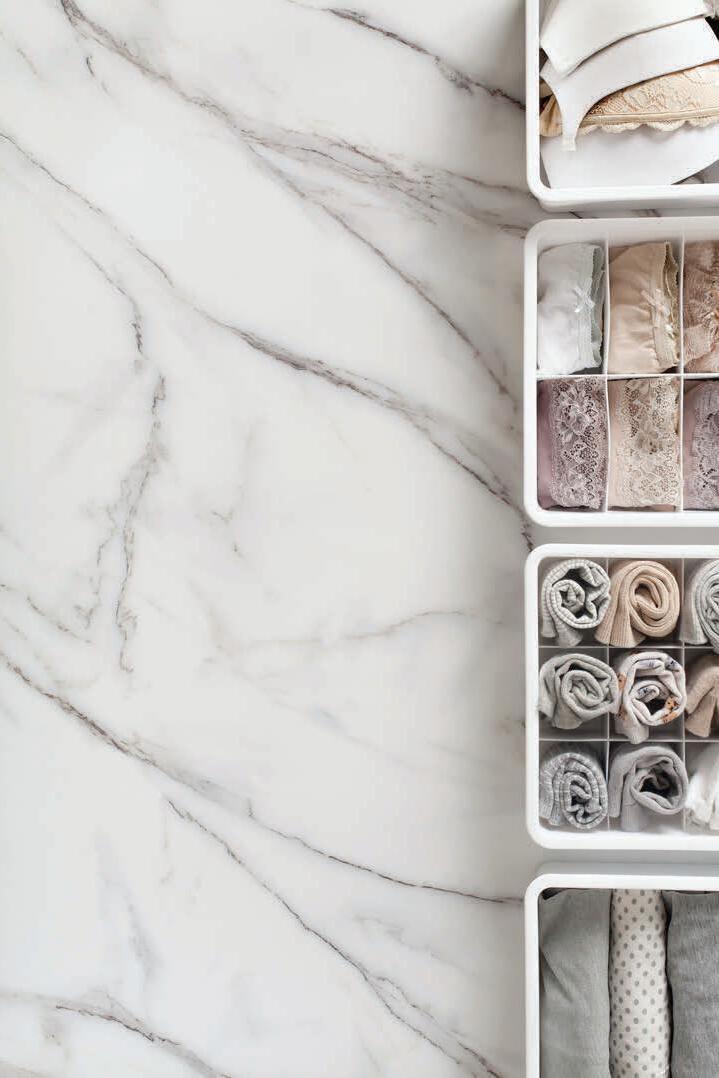


The first step to any organization project is decluttering. Either pull everything out or go through every item in your closet and ask:
n Does this fit?
n Do I wear this regularly?



n Does it suit my current style?
n Is it in good condition?
Divide your items into three categories: keep, donate and discard. Take a cue from Marie Kondo: if it no longer sparks joy, it’s time to let it go. Likewise, if you haven’t worn it in years, it’s time to part ways. For donation tips, see page 74. If you share a closet with a spouse, it is advisable to do this together. People have different reasons for hanging on to things. You might make an assumption about that frayed button-down shirt that has sentimental value in your partner’s eye.
The second step is to categorize and group in ways that make sense to you. Some simple groups are tops, (blouses and T-shirts), bottoms (jeans and trousers), skirts, dresses, outwear and accessories. Some people like to take it a step further and implement a color-coding system starting with light colors and gradually moving to darker shades.


The easiest way to immediately transform a closet? Invest in coordinating hangers; they eliminate visual clutter in your closet and help save space. Velvet hangers, in particular, are super slim and take up half the room their bulky wooden and plastic counterparts do.
Next up, maximize your space with smart storage solutions. For example, use vertical space by installing wire shelving to store folded clothes or sweaters. Use hanging organizers for shoes. Drawer dividers keep things like socks, lingerie and accessories neatly separated. Hooks and pegs are good for belts and bags. If you have a lot of short items like shirts and skirts, an extra hanging rod will double your space. Conversely, if you have primarily longer pieces and double hanging rods, remove the bottom one.

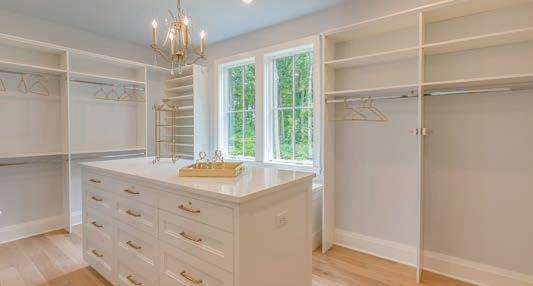
If you need to customize your closet further, look for a reputable closet organization company and schedule a consult. A closet designer will visit your home, measure the space, discuss your needs and produce a design. The system is then installed by professionals and comes with a warranty.
Under new ownership, Closet Storage Organizers is a family-owned business serving the Roanoke Valley. Dave and Jill Reilly, a husband-and-wife duo with roots in the Roanoke/ Salem community, pride themselves on bringing “heart and hospitality” to their projects. Dave visits the home first to do the measurements and get a feel for the customer’s general vision. Then he turns it over to Jill, who handles the design process.
“I typically send a detailed questionnaire that gives me important information about the clothes in their closet, how they use their closet and what additional things they may want to include (like hamper, ironing solutions, jewelry or watch


storage or even safes),” says Jill. At this point they will make a CAD drawing, and with approval, will begin the installation.
According to the Reilly team, a well-organized closet is heavy on double hang space and adjustable shelving and light on single, long hanging rods. Classic closet organizing mistakes that they see are not organizing clothing by length/type, storing all seasons of clothing in the same space and keeping things that no longer suit their style or size.
“A well-organized closet can really simplify your life,” says Dave. Some popular low budget items their customers like are combo units (wire hanging and laminate towers), adjustable wire and slatwall for maximizing narrow spaces. Splurge items include tilt-out hampers, jewelry drawer inserts and pull-out rotating mirrors.
With organization and a bit of thought, your closet can serve you better. Spring is a great time to tidy up! ✦


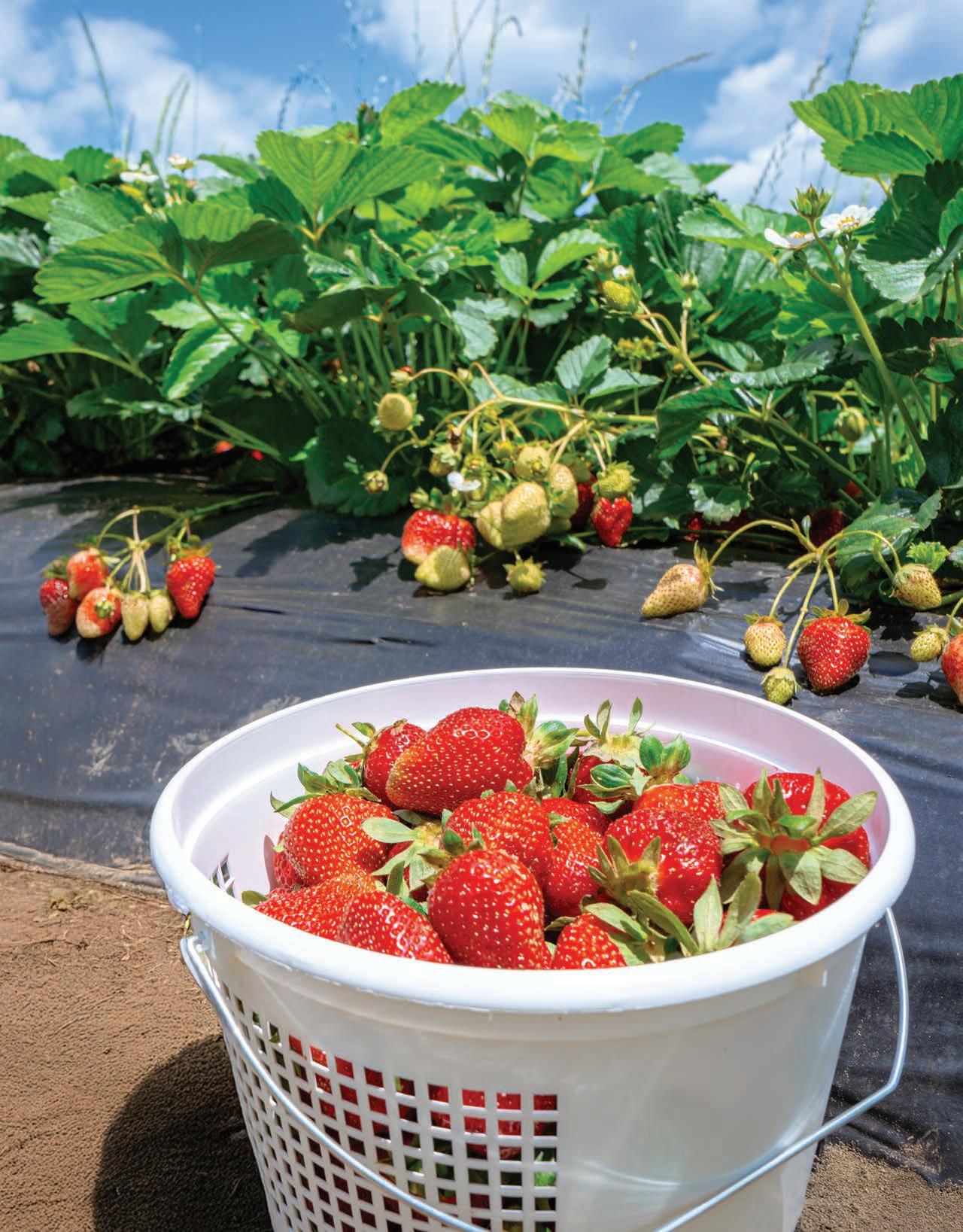
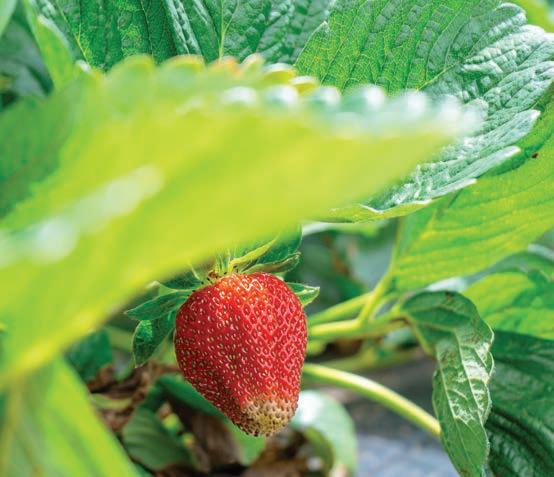

BY RYAN TIPPS
Starting in late April or early May in Virginia, you’re almost guaranteed the opportunity to savor one of the produce world’s sweetest and tastiest treats: fresh strawberries. For several weeks going into June, growers begin harvesting these delights — and for those of us adventurous enough to seek out a little fun, many farms offer a pick-your-own option.



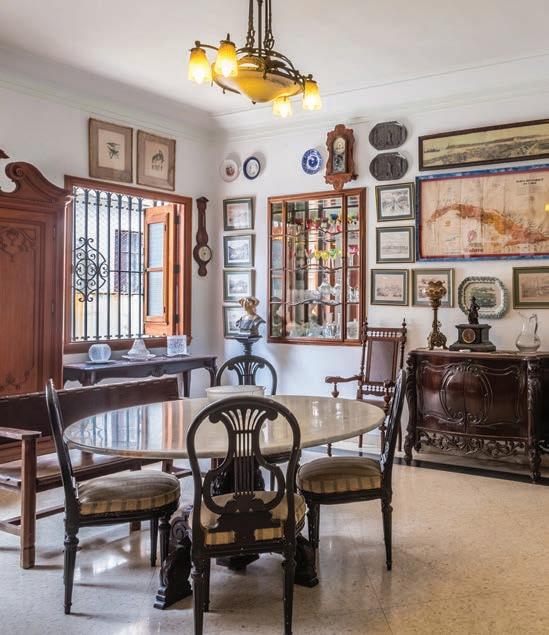




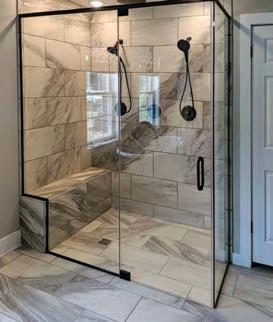





While Virginia strawberry farms are most likely to be found in the Eastern region, where the coastal moisture and the sandy, fertile land of Tidewater allows this crop to thrive, there are a few closer destinations. The exact timing of the strawberry season can vary depending on several factors, including altitude, precipitation and temperature.
Around the U.S., more than 8,000 strawberry farms span 73,400 acres. Strawberry-growing is separated into eight regions, and Virginia is part of Region 7, which largely consists of the Southeast minus Florida. Region 7 is the third-highest producing region for strawberries, with Virginia boasting 231 strawberry operations. According to Virginia Cooperative Extension, the largest number of those is in the 1- to 3-acre range, though roughly a quarter are less than 1 acre.
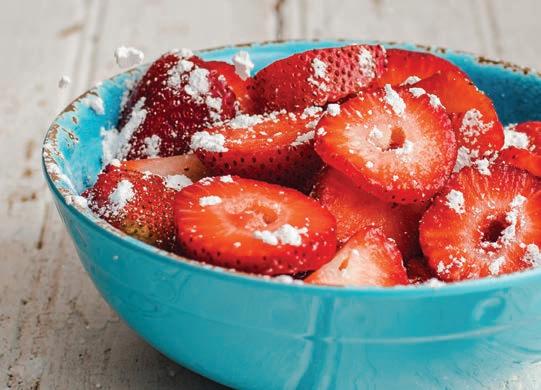
Well-established strawberry varieties (or cultivars) such as Chandler, Camarosa, Camino Real and Benicia excel in Virginia, though others, such as Sweet Charlie and Flavorfest, are known as some of the sweetest around.
Strawberries are considered an ideal fruit for pies, fresh eating or even for freezing for later in the summer. My daughter loves a hearty bowl of strawberries (admittedly with a touch of powdered sugar, though that’s certainly not necessary!) as a treat after breakfast.


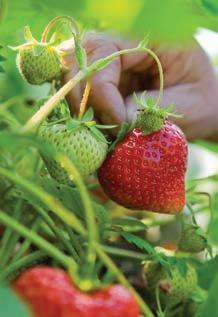
Growers often embrace the family-friendly aspect of pick-yourown (or U-pick) offerings because it allows them to connect with customers and eases some of the labor burdens that produce farms endure. Some sources say that U-pick is so popular in the strawberry sector that upward of 75 percent of strawberry farms do this for harvest.
There are a handful of popular and well-established U-pick strawberry operations near Lynchburg and Danville, and if we’re being honest, there may be a smattering of backyard-type operations that you’ll likely only discover by stumbling across a homemade sign staked into the ground along a curvy two-lane back road. Don’t pass on that opportunity if it arises!
But if you want to plan a course, check out the farms listed on the next page. It’s recommended that you visit their website, social media pages or call or text to confirm that they are open and still have crop available that day for picking. It’s not uncommon for ripe strawberries to be picked over by noon each day.
And, just in case the farm doesn’t have containers available, it’s always good to bring one with you!
There is a bit of an art to picking a strawberry properly, and you can chat with someone on site to help you get it right. Generally, you’ll want to grasp the stem just above the berry, and pull with a slight twisting motion. Then, carefully place the berry in the container, and be certain not to overfill it or try to “tamp down” the berries you’ve already harvested. And, please, be mindful of where you place your feet and knees while you’re picking!
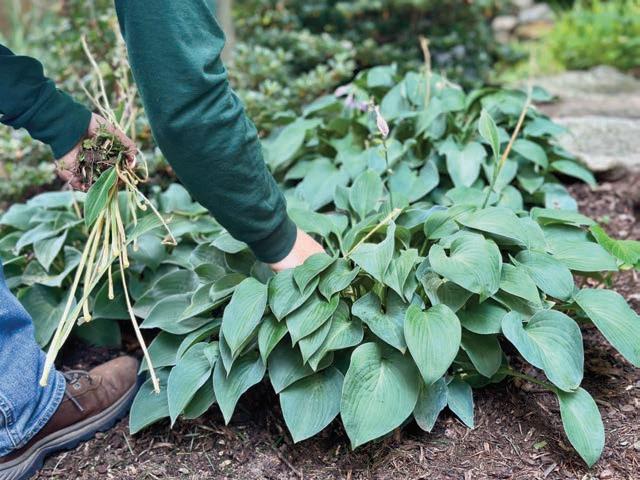


Seaman’s Orchard: Seaman’s Orchard is about 30 minutes north of Lynchburg, just off of U.S. 29. The operation planted its first strawberry patch in fall 2003, and its strawberries are grown on raised beds on top of plastic in clean, green grass rows. (434-277-8130)
Yoder’s Farm: In Rustburg, 20 minutes south of Lynchburg, Yoder’s Farm is a family-run diverse operation, which produces juicy Chandler and other varieties of strawberries for its customers. The farm has spacious, well-strawed row access to make picking strawberries as easy and user-friendly as possible. There is also convenient parking available for visitors. (434-401-4864)


Bachelor Hall Farms: On the western side of Danville, just off of U.S. 58, Bachelor Hall Farms has been doing strawberries since 1996 and calls itself “pretty much the only organic operation within 100 miles.” In addition to the robust supply of strawberries, visitors can find produce such as broccoli and collards. (434-685-7959)
Motley’s Strawberry Farm: Easy to access near the crossroads of the intersection of U.S. 29 and Virginia 40 in Gretna, Motley’s Strawberry Farm does a hearty business of pick-yourown and prepicked strawberries during the late spring and early summer months. The farm has beautiful, easy-to-traverse rows and has a very active presence on Facebook. (434-656-2838)

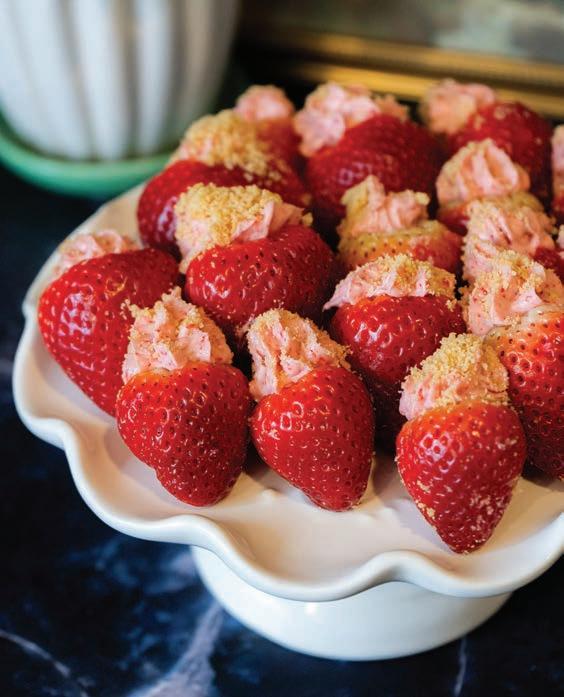
Of course, you’ll need something fun to do with any strawberries you pick. Laura Ann Pollack, who works at Healthy Chesapeake and encourages kids to “try the rainbow” of food in a program she started called Color Your Plate, offers this amazing recipe:
Whipped Strawberry Bites
24 fresh strawberries
1 cup freeze-dried strawberries
½ cup shortbread cookies, crumbled
8 ounces cream cheese, room temperature
¾ cup confectioners’ sugar
1 teaspoon bourbon vanilla extract
Core and hull strawberries (tip: use a straw). Use a food processor to crumble the freeze-dried strawberries into a powder, and set aside. Use the same food processor to crumble the shortbread cookies, and set aside. Combine cream cheese and confectioners’ sugar into a mixing bowl. Using a mixer, start with a low speed, and gradually increase speed to blend ingredients. Mix for 2 minutes on high speed for a smooth and fluffy texture. Adjust the speed to the lowest setting, and add the bourbon vanilla extract. Slowly add the freeze-dried strawberries until fully incorporated. Fill a piping bag with strawberry filling, and use it to squeeze into fresh strawberry. Top with crumbled shortbread cookies. ✦


Since 1975, ASK has been dedicated to providing A-assistance, S-support, and K-kindness to children with cancer and their families during treatment and beyond. From our humble beginnings in Richmond, we’ve grown to provide crucial educational, family and community support across Virginia. Because of the generosity of the communities in which we serve, we’ve been able to fund vital positions, provide financial assistance and build a powerful support network for our families to help make their lives a little better when they
need it most! James River Media’s Mari White spoke with Amy Godkin, executive director of ASK Childhood Cancer Foundation, to learn more about ASK and how the community can get involved.

Mari White: Over the past 50 years, ASK has grown from serving families in Central Virginia to expanding its services across the Commonwealth to serve families receiving treatment at each primary pediatric oncology and hematology clinic, like Carilion Children’s in Southwest Virginia. Can you give our readers a snapshot of what this support looks like for families in the Southwest region?
Amy Godkin: Since 2023, ASK has had a presence in the Southwest Virginia community and has been providing families with educational support, financial assistance and a community they can lean on during their cancer journey. We have an Education Support Navigator at Carilion Children’s and the other primary pediatric oncology and hematology clinics across the Commonwealth. This support helps bridge the gap between the child’s medical team and school team because we know, as an organization, that cancer can greatly impact a child’s education at any age: from time out of school, a transition back to the classroom or effects from treatment that make learning more challenging. That’s where we step in to provide support from preschool through high school and the transition to adulthood.

ASK makes sure every child has the extra help they need to be successful in school.
Mari: You mention providing support to families undergoing treatment. Can you share more about this service?
Amy: Many people know childhood cancer is a devastating diagnosis for families and extremely challenging, but what most people don’t know is that, on average, one in four families diagnosed with pediatric cancer will lose more than 40% of their annual household income as a result of treatment-related work disruptions. Not only are our families faced with difficult financial decisions just so they can be at their children’s appointments and focus on their health, but they are also faced with daily responsibilities such as managing their household and keeping up with their finances. One way we try to support this challenge is with financial assistance. ASK steps in to provide funding for families with children in active treatment to help cover a family’s non-medical bills like their utility, electricity or mortgage bill.
Mari: Tell us a little more about the expanding need your organization sees.
Amy: Each year in Virginia, about 359 children — that’s 6-7 children every week — are diagnosed with cancer. ASK, formerly a Richmondfocused nonprofit, has significantly broadened its reach to support these families across the Commonwealth. Beginning with the implementation of Education Support Navigators in all five pediatric oncology and hematology centers, ASK expanded its


Amy Fender, Education Support Navigator, serves children receiving treatment at Carilion Children’s. Amy visited ASK Kid Nikolas, who was diagnosed with Acute Lymphoblastic Leukemia (ALL) at the age of 9, to help prepare his friends and faculty on how to best support him as he returns to school from treatment.




ASK families and community supporters gathered for the 19th Annual 5K & Fun Walk and Roanoke’s first-ever in-person Walk at Spartan Field to show their support of the 550 children with pediatric cancer across VA. It’s so much #MoreThanAWalk.
services beyond Richmond. Within the past year and a half, financial assistance has also been extended to all families across the state. Now, ASK is actively developing its third pillar of support in other regions: community and connection. By bringing its established community events and programs to each region, ASK aims to provide comprehensive, wrap-around support and a community that families can count on as they face the challenges of childhood cancer throughout Virginia.
Mari: What sets ASK apart from other childhood cancer organizations?

Amy: There are many amazing things ASK does for our families, but if I had to put my finger on one thing, it’s our relationships and approach to care. We like to say our secret sauce is our relationships because every family that enrolls with ASK, remains an ASK family for a lifetime. We are there for our families every step of their journey, and we don’t disappear once they ring the bell and conclude treatment. Each family’s journey is different, and we do our best to provide every family with wrap-around services to meet their needs from the moment of diagnosis through treatment and beyond.
Mari: What does the future of ASK look like, and how can those interested get involved and help?
Amy: It will take many hands to help ensure no child and their family have to face this journey alone. For those interested in volunteering their time or making a donation, they can visit askccf.org or scan the QR code below!

askccf.org

The estimated number of children in Virginia diagnosed with cancer each year. 359
Children in active treatment across the Commonwealth.
50%+
66.6%
550+ of children who have battled a cancer journey will experience an educational setback.
Cancer patients and survivors who experience an aspect of social isolation at least some of the time, and 31% report feeling lonely, very lonely, or somewhat often.
46% of kids with cancer will develop cognitive and physical late effects that impact their ability to learn.
43 of families diagnosed with pediatric cancer experience severe financial hardship. 50%+
is the average number of school days a child will miss during their first year of cancer treatment.

Scan the QR code to meet our Kourageous Kids, and learn more about the children impacted by pediatric cancer in your community.

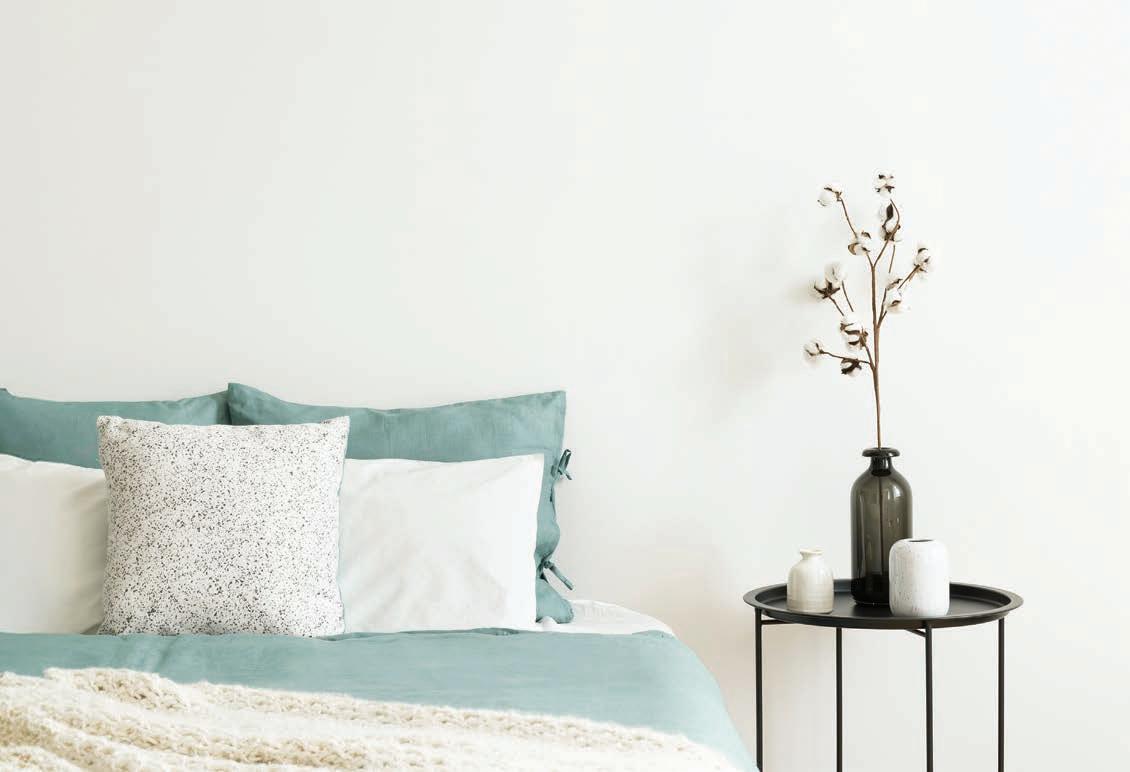
BY MARTHA S. COFFEY
No doubt about it, springtime is the season of renewal and fresh starts. Here in Virginia, as days lengthen, flower buds poke through the soil, bunnies crisscross lawns, birds sing and chartreuse leaves unfurl, all to herald spring. People far and wide behold these signs of spring and are energized to undertake a deep cleaning of their living spaces. It’s that age-old “out with the old and in with the new” feeling that drives us. And once the arduous task of spring cleaning is complete, a cleaned up and cleaned out home is the perfect backdrop for five easy, but high-impact home updates. Depending on your time and budget, consider one or more of the following ideas for how to update the most-used spaces in your home.
Kitchen transformation
What better place to start your spring refresh than in the kitchen, the hub of your home? This prime real estate can always benefit from some attention. Instead of a major overhaul to replace cabinets, countertops and flooring or to repaint walls, consider changing your cabinet hardware, often referred to as the “jewelry” of a kitchen’s outfit. There are more stylish hardware options available than ever before. Just stroll down the appropriate aisle at Lowe’s or Home Depot or visit online sites such as Top Knobs, Schoolhouse, Rejuvenation or West

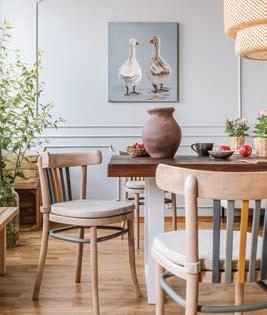
Elm for inspiration. With careful measurements to guide your selection and just a few hand tools, the change-out of kitchen cabinet hardware can be accomplished in a day and significantly update this important room.
But if a complete set of new hardware isn’t in your budget, there are many other less costly updates that can easily be made to the kitchen. Start with new kitchen towels and dishcloths, give your back a break and add a colorful anti-fatigue floor mat in front of your sink, invest in a new set of cookware or tie new cushions onto the seats and backs of chairs around an eat-in kitchen table. Replace any artwork you already have with something new and spring-themed. Illustrations or photos of birds, bunnies, chicks and florals are all joyful symbols of springtime. Even a bowl of fresh fruit on the countertop can add a welcome burst of color.



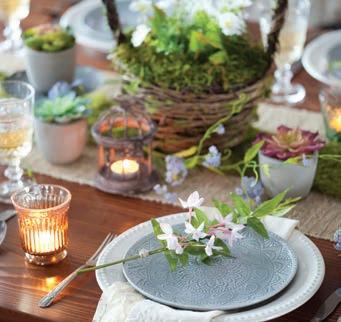

How numerous are the ideas for easy updates to the bedroom! With one stop at a department store or an online retailer’s website, you can purchase an eye-catching new bedspread or comforter with matching pillow shams, throw pillows in coordinating colors and assorted textures, a soft blanket for the end of the bed (perfect for naps!), as well as a stylish runner rug by the bed if you have bare floors. Adding a new or even a repotted plant in a brightly colored container will literally breathe fresh air into this important room in your home.
Once the dust has settled following your thorough spring cleaning, embark on a close inspection of the wall and trim paint in another of your most-used rooms. If an inspection of your family room shows scuff marks or other scars in painted surfaces, try one of the new paint pens (search for Slobproof Touchup Paint Pens on Amazon), which are fillable with your own leftover wall and trim paint. Using these handy pens will eliminate the need to purchase new cans of color-matched wall and trim paint, allowing you to quickly restore any room to just-painted perfection.
After paint touch-ups, consider adding new throw pillows and soft throws to your sofa in lighter, brighter colors. Designers at Better Homes & Gardens also recommend changing lampshades and draperies, purchasing new houseplants and re-organizing bookshelves for quick, impactful updates to your family room.
While not nearly as large as other oftused rooms in the home, bathrooms are certainly important and can also benefit from an occasional sprucing up. Because visitors are likely to see these rooms, designers often suggest going bold in these smaller spaces. Try some wild wallpaper (now available in peeland-stick versions), a stylish new mirror or piece of art, as well as new plush towels, throw rug and shower curtain for guaranteed pizzazz.
One of the easiest ways to up the wow factor in a room is to change any tablescape within it. This can be done to kitchen and dining room tables, dining room sideboards, family or living room coffee tables, or bedside and foyer tables, plus any other flat surfaces in need of adornment.
Interior designers at Elle Décor and Houzz both recommend beginning your tablescape revamp by searching your own home for suitable spring accoutrements. Think likenesses of baby animals, candles and bowls in pastel colors, as well as books with colorful covers. Beneath these finds, add a new seasonal fabric table runner. Curating a pleasing blend of your own possessions with some newly purchased ones to create fresh tablescapes can be a quick way to add spring cheer to your home. Indeed, with minimal expense and effort, you can customize all these suggestions to bring about a metamorphosis in your own home this spring. ✦
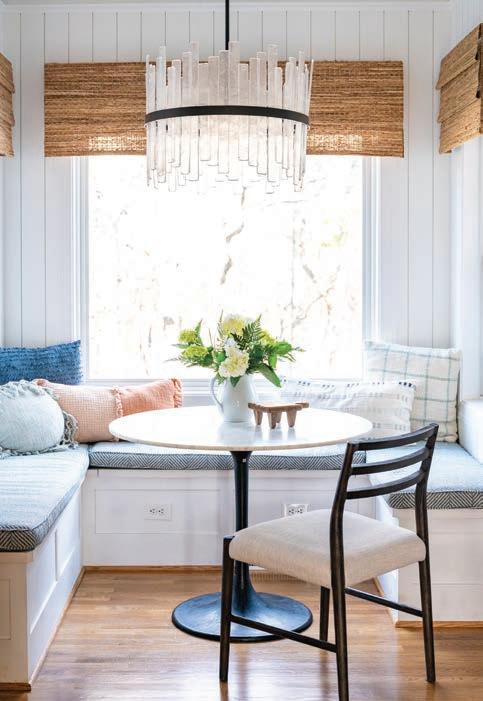
BY ASHLEY BLAIR SMITH
The change in seasons tends to bring about the desire to deep clean our homes and dust away the cobwebs. It also might present you with the urge to shift things around a bit in your space. Whether you’re feeling the subtle pull to get started on those design projects you’ve been daydreaming about all winter long or simply looking to refresh a room’s color scheme, creating a mood board can act as a beautiful starting line for your next home renovation or room rearrangement.
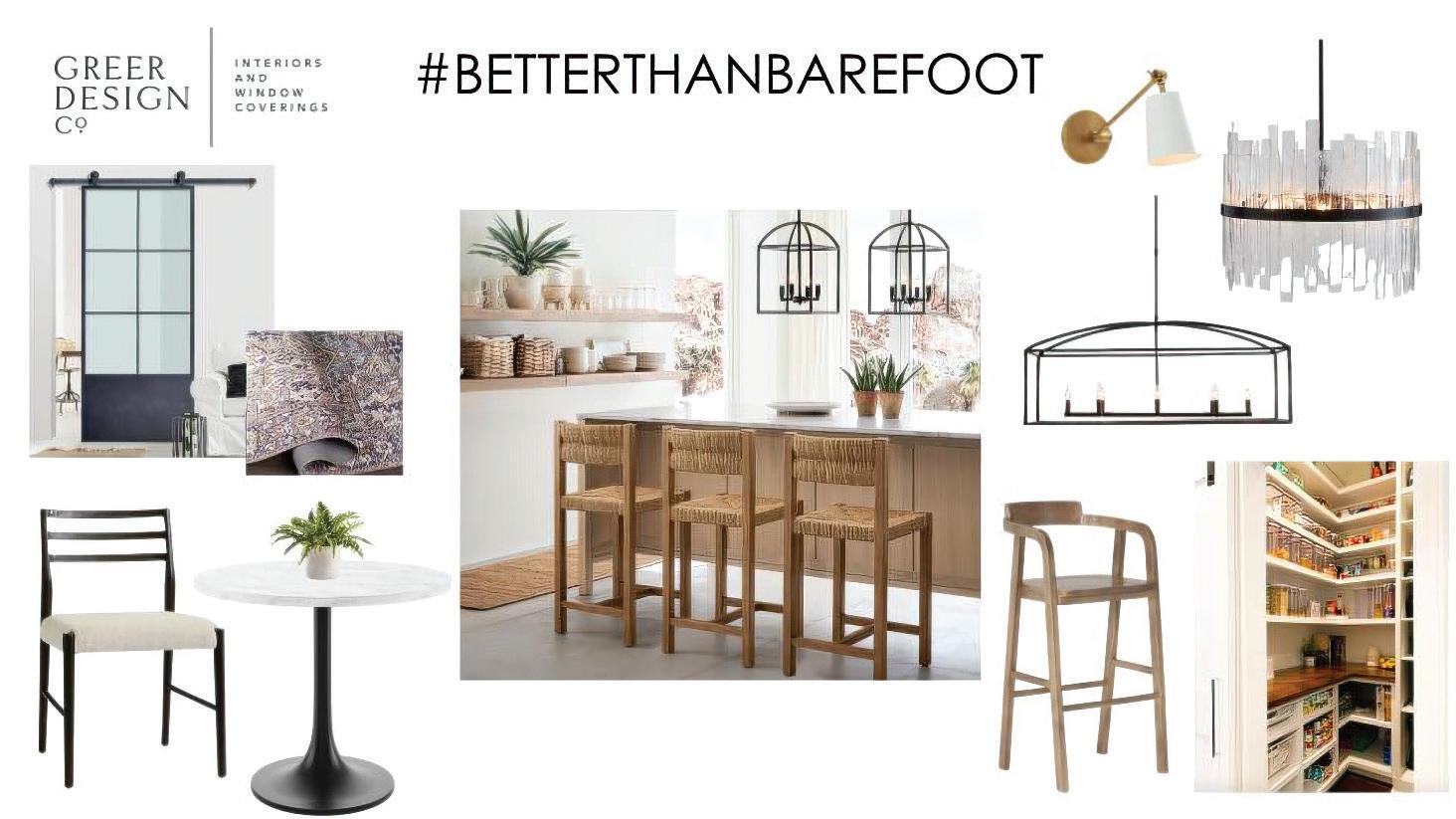

Sometimes called a design board or an inspiration board, a mood board is a visual tool that helps to refine the ideas you have for your space. Whether you’re looking for mid-century modern or a more traditional style, a mood board can help you visualize how different textures, color palettes and wood tones flow together to create the style you’re envisioning.
According to Co-Owner of Greer Design Co. Mady Perillo, a good mood board includes several important pieces in order to help bring the vision of a home interior to life.
“The most important aspect and overall goal of the mood board is really to create a curated space where all your selections look cohesive and beautiful together,” Perillo says.

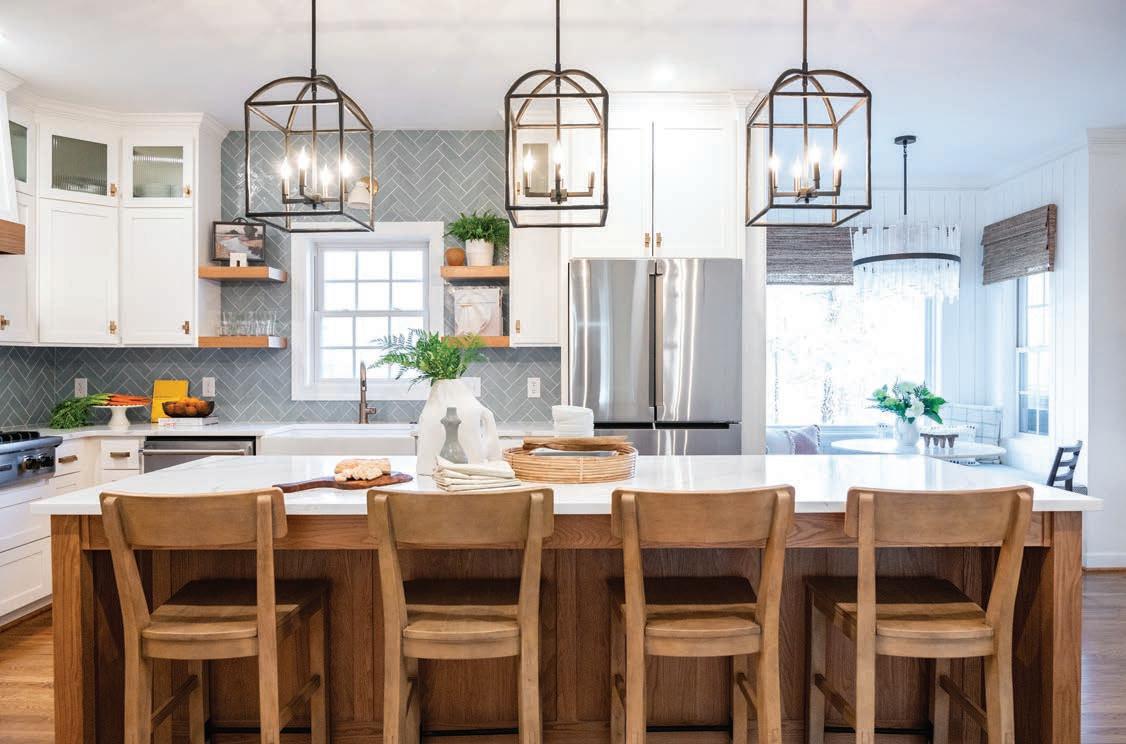
The building blocks of a mood board include gathering inspirational images, choosing a color palette, taking inventory of furniture, lighting and décor elements that you have sourced for your space, and collecting any and all textural elements such as tile, stone, fabrics, cabinetry and window coverings that you want to use.
The first step is gathering inspiration for your space. This can look different for each individual, but a great place to start is collecting images that speak to you.
According to Perillo, Instagram, Pinterest, print ads or design books are great sources for images. You don’t have to limit yourself to visuals of interiors; rather, choose photos that speak to you. Focus on how the image makes you feel, the color palette and if it aligns with the feelings you want your home to evoke.
A cohesive color palette is another main building block for your mood board. Generally, you’ll want to choose three to five core colors, including neutrals. “This can be used for paint, stains, upholstery and window coverings,” Perillo says.
When it comes to furniture, lighting and décor elements, “you want to be sure they are all complementary to each other and look good paired together,” Perillo says.
After you’ve curated the pieces for your mood board, next is putting it all together in either a physical or digital format.
Physical vs. digital
There are pros and cons when using either a physical or digital mood board — that’s why Perillo recommends using both when designing a space. “Both are necessary to create a cohesive design,” Perillo says. “We always pair them together.”
PHYSICAL
It can be easier for you to visualize your space when you have tangible elements for the room in front of you. This is one of the benefits of a physical mood board.
What should you include on a physical mood board? Paint swatches are a wonderful starting point for the color palette portion of your board. Other great elements to include are samples of tiles, fabrics, hardware and flooring. Perillo recommends shopping locally for these items.
“Local stores will have samples you can borrow or have, and [they] have experts to assist you in your project,” Perillo says. “If you can’t find something locally, I would look to see if your favorite online retailers offer samples of fabrics, wood and tile.”
Seeing how different textiles, wood grains, hardware and surfaces all look and feel together can really help to bring your room inspiration to life.
A downside of a physical mood board, Perillo says, is that it can be difficult to keep together and is not easy to transport. “But a pro-tip is to put all of your elements in a decorative tray that you can easily move around,” Perillo says.

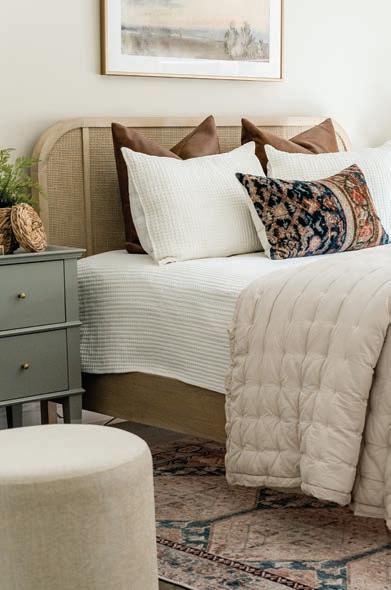



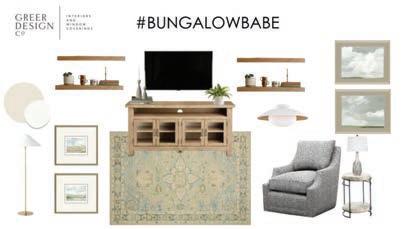
When creating a digital mood board, Perillo recommends using a program such as Canva or PowerPoint. Both are fairly easy programs to navigate. To use either program, you’ll need to import digital photos from your phone or camera or screenshot images from favorite websites. Depending on your skill level, you can then remove backgrounds, change image sizes and orient the images on your page to find the right fit.
A pro of using a digital mood board, according to Perillo, is that it’s easy to create, edit and share. This allows for continual tweaking and updating, which can be especially helpful when working with an interior designer on your project.

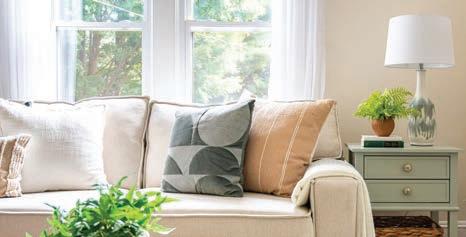
Your digital mood board can easily be saved and kept in cloud storage. Another benefit of the digital board is that you can add links to home interior items for ease and convenience of shopping.
A con of using a digital mood board is that colors appear different hues based on your screen, Perillo says. It can also be hard to gauge the scale of different items in each space by simply viewing them on a digital board.
Whether you’re gathering inspiration for a design that’s simply a daydream or you are working with an interior designer on a home renovation project, a mood board is a vital, cost-effective tool. Here’s to spring dreaming! ✦

What: Join us for a mood board workshop hosted by Greer Design Co. at Curtains, Blinds & Bath! Come with ideas on what space you want to create your board for, and bring your laptop.

When: Thursday, May 8; 6-7:30 pm
Where: Curtains, Blinds & Bath (18458 Forest Road, Forest)
Register: Sign up by scanning the QR code. Hurry, there are a limited number of seats available!

BY BECKY CALVERT

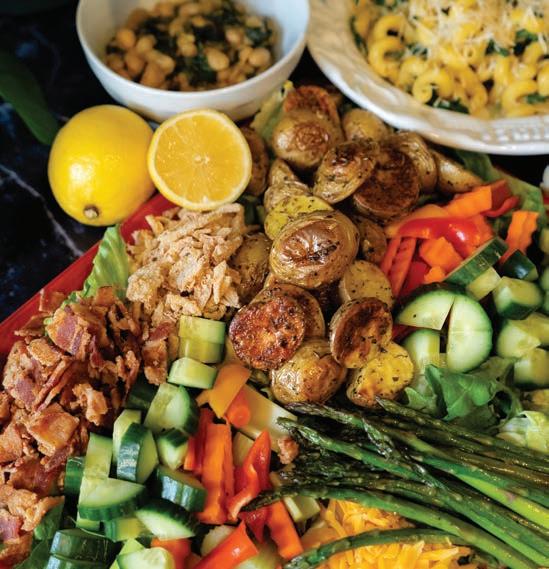
My favorite thing about spring is all the fresh greens. After months of eating root vegetables, the idea of fresh greens makes me slightly giddy. Not only do I have a tendency to overplant them in my garden, I also have a habit of buying all the green things I see at the farmer’s market. This has led to my fridge being absolutely packed with greens, which has then led me to get creative with using them all. Here are three of my family’s favorite go-to meals incorporating fresh greens. Each recipe is easily varied according to what you have on hand, so you can serve them at least once a week but with a few changes here and there.

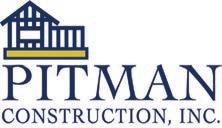
Quick Arugula Pasta
At its most basic, this dish is fresh greens tossed with pasta. Garnish it with Parmesan cheese, and finish with a squeeze of fresh lemon and a grind of fresh black pepper. Or add any number of pantry items to offer some variety and substance to the dish. Among my favorite riffs on this are the addition of canned tuna, white beans, black olives, capers or canned clams cooked in white wine.
¾ pound pasta, any shape
Olive oil (a few Tablespoons)
1-2 cloves garlic, minced 5-8 ounces baby arugula (or spinach)
Salt, pepper
Fresh lemon juice to taste
Parmesan cheese
Optional: 1-2 cans tuna OR 1 can white beans OR 1 can clams, drained, liquid reserved
Crushed red pepper
Cook the pasta in salted water. While the pasta is cooking, wash greens. Heat oil in small pan over medium-low heat, and sauté garlic until fragrant. If using crushed red pepper, add it in addition to the garlic. If using tuna or beans, add them to the pan, and heat briefly. When pasta is done, reserve a cup of the cooking water before draining. Drain pasta, and add oil with garlic (and tuna, beans or clams if using). Add greens, and toss until well combined. The greens will wilt as they mix with the pasta. Use reserved cooking water to keep the dish loose. Squeeze fresh lemon over the dish before serving. Serve with Parmesan cheese and freshly ground black pepper.
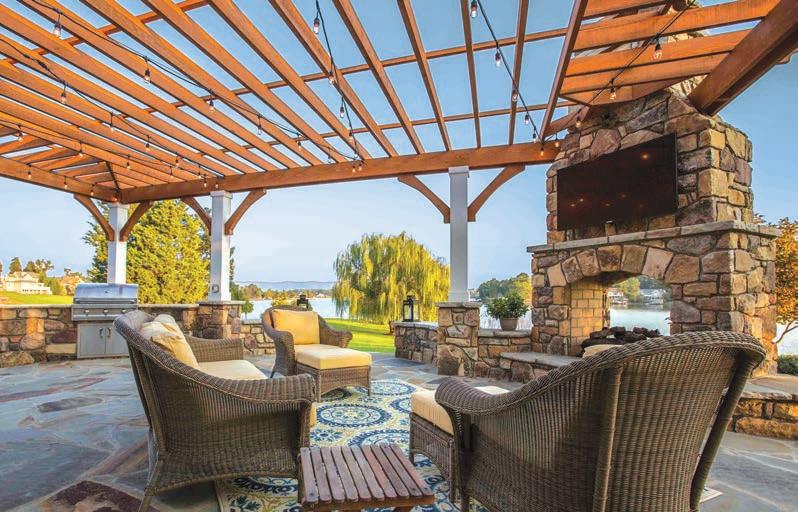

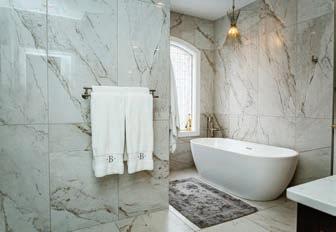

A composed salad is one that is arranged on a plate, rather than tossed in a bowl. It’s a great way to use what’s on hand while also focusing on the produce in season. Using seasonal ingredients means you can make this salad throughout the year, and it’s always slightly different. Start with a bed of lettuces, then begin to arrange your other items on top. You can shred, roll, dollop, chop, shave, blanche or roast your various elements so that the end result is a bit of controlled chaos. Keep your elements slightly big –you want to see what they are as part of the presentation.
You can create individual plates or one large platter. I like to arrange my salads on a platter, with the various elements laid out in stripes, but there’s no right or wrong way to arrange it. Round it out with a nice loaf of fresh bread, and you have a hearty meal with minimal effort. Here are the elements to consider:
SOMETHING LEAFY: This makes the bed for the other ingredients. Lettuces like Boston, spinach, arugula, romaine or iceberg.
SOMETHING RICH: Makes the salad a satisfying meal. Cheese, hard boiled eggs or caramelized onions.
RAW VEGETABLES: Focus on what’s in season. Radishes, sprouts, avocados, sweet peppers, cucumbers, carrots, celery or peas.
COOKED VEGETABLES: Blanched, grilled or roasted, they bring a variety of colors and textures. Beets, squash, cauliflower or broccoli, green beans, edamame or asparagus.
SOMETHING EARTHY: Gives the salad some substance. Beans, boiled potatoes, lentils, grains like farro, barley or quinoa.
SOMETHING TANGY: Helps to wake up all the flavors. Olives, capers, pickled onions, anchovies or cornichons.
SOMETHING SWEET & JUICY: Little bursts of flavor to contrast with the savory elements. Melon, tomatoes, figs, peaches, nectarines or grapes.
SOMETHING CRUNCHY: Adds texture, something salty. Croutons, toasted nuts, fried onions or roasted chickpeas.
SOMETHING MEATY: Optional, but adds protein and a little flavor. Ham, tuna or other fish, smoked trout, chicken, bacon, salami, shrimp or crab.
Sprinkle freshly chopped herbs on top. You can drizzle dressing on top or serve it on the side.
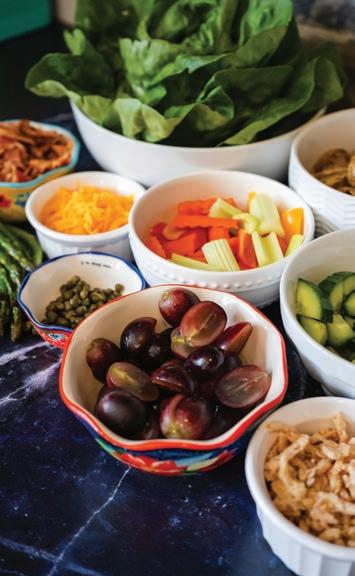

2/3 cup olive oil
1/3 cup red wine
vinegar
Fresh lemon juice
Salt and pepper
Pinch of dry mustard
Pinch of garlic powder
Blend and serve.
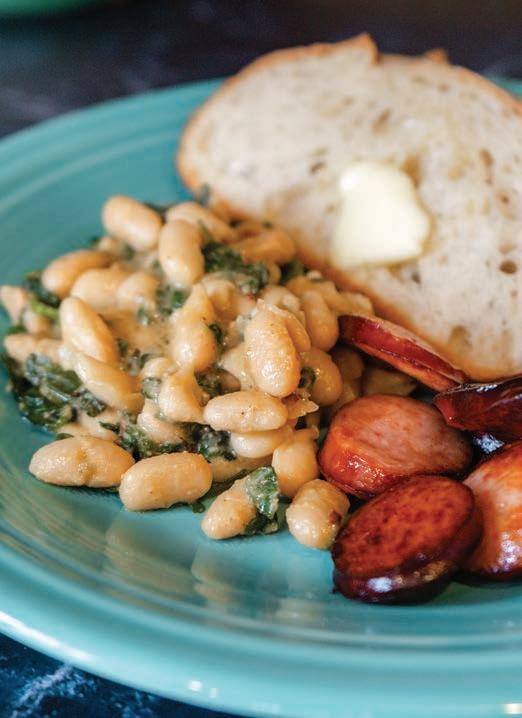
Greens and Beans
(Adapted from foodinjars.com)
This works with just about every green you can imagine. Round it out with sausage or Parmesan cheese. I like to toss it with pasta, although it’s also good with bread to soak up the juice, particularly if you serve it with some sausage. Don’t skip the lemon at the end – it makes the dish.
1/4 cup extra virgin olive oil
3-4 garlic cloves minced
Crushed red pepper
5-6 cups chopped greens
(anything goes here – micro greens, kale, spinach, arugula, mustard greens, endive or Swiss chard)
2 cups cooked white beans rinsed
1/3 cup grated Parmesan or pecorino
Juice of 1 lemon
Salt and pepper to taste
Heat the oil in a large skillet over high heat until it shimmers, and add the garlic and crushed red pepper. Stir quickly to cook, then heap the greens into the pan. Put a lid on the pan to help the greens wilt a little. After 2 to 3 minutes of cooking, check to see if the greens have wilted. If so, add the beans, and stir to combine. Add 2-3 Tablespoons of water and the cheese, and cook for another minute or two, until the greens are tender and the liquid in the pan has coalesced into a creamy sauce. Add the lemon juice, a little salt and 6 or 7 turns of a pepper grinder. Taste, and adjust the seasonings. Serve hot. ✦
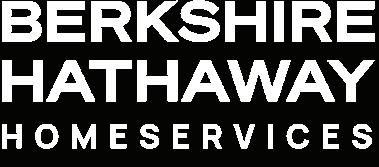





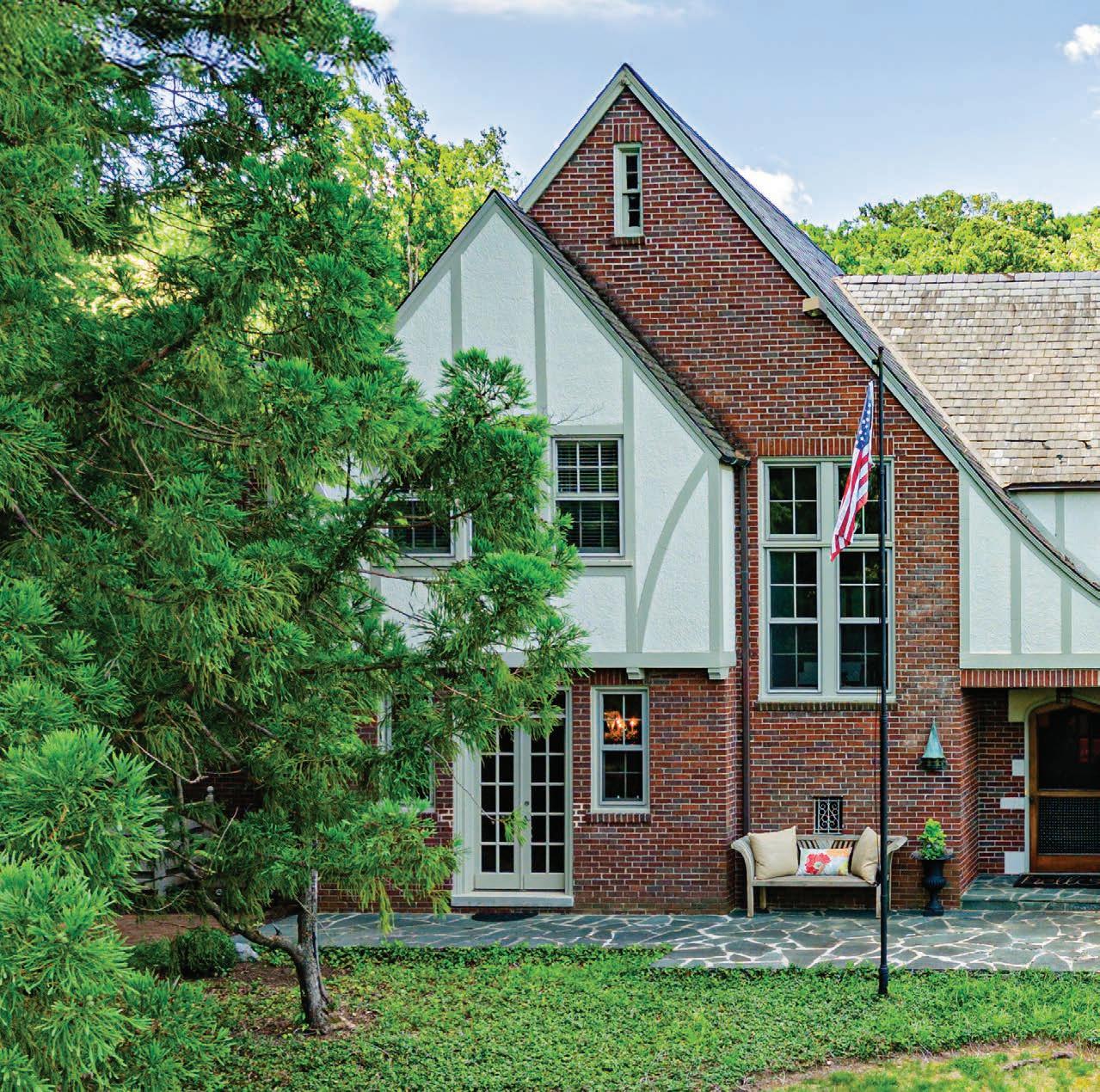
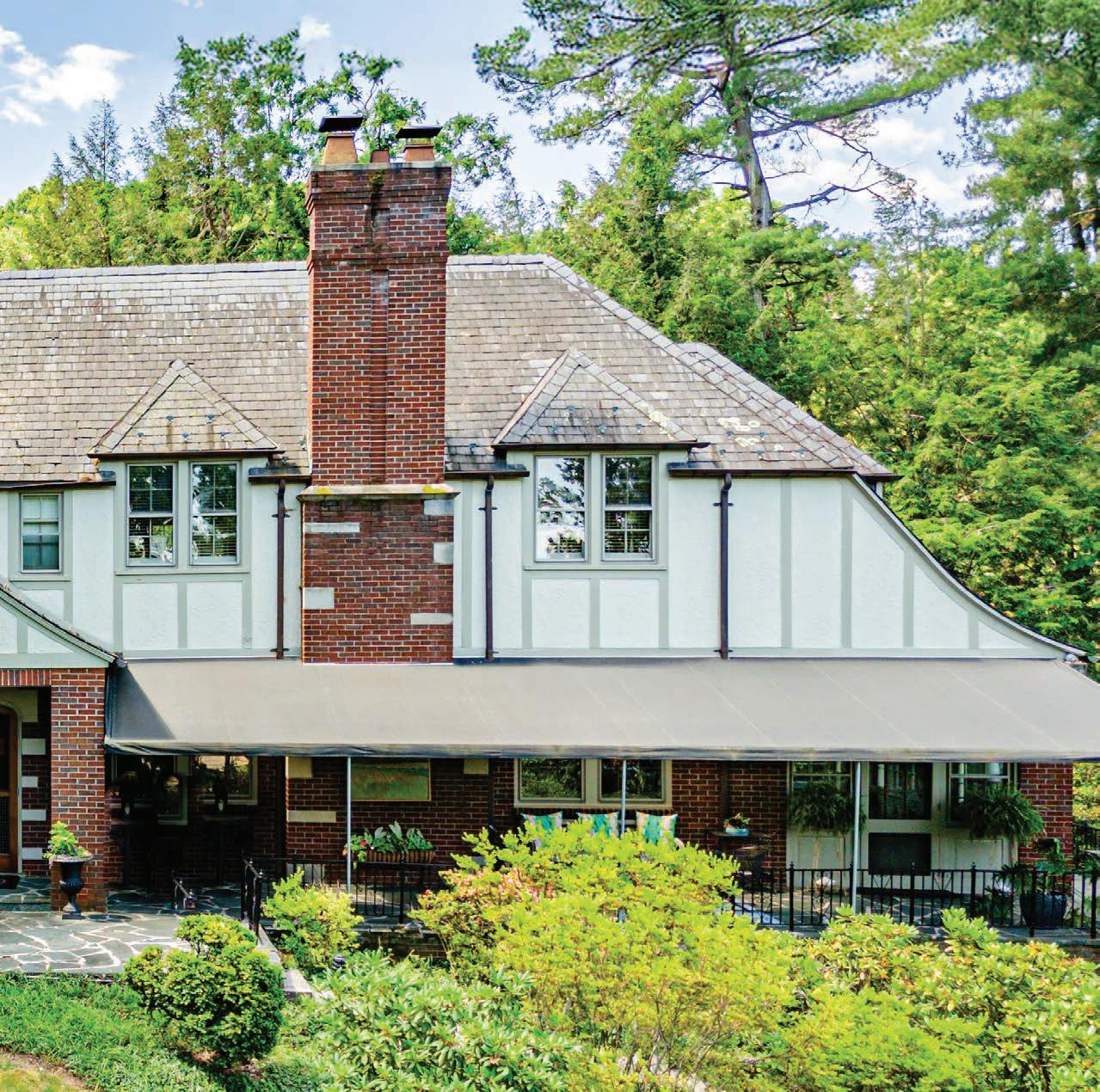
BY KATHERINE FULGHUM KNOPF | Photography by Kathryn Feldmann
The oil painting catches your eye as you approach the front door. A landscape painted by Winn Ballenger hangs outside on the elegant Tudor home’s brick front exterior wall.
Protected from the weather by a sturdy metal and fabric awning, it creates an outdoor room that welcomes friends and family to visit on the front patio. The painting’s bright green mountains and striking azure river give a nod to the home’s interior. This is a home curated with art.

Stepping through the arched front entry, the wooden screen door with metal insert complements the paneled wood front door. Inside, beautiful wood paneling gives a clean look that unifies the home’s décor. The front hall, dining room and living room moulding are pickled a light gray and the walls are painted a lovely cream. Vera Silcox, a Roanoke designer and painter, glazed the paneling, crown moulding, door trim and window moulding when Jack and Winn Ballenger moved here 31 years ago. It provides a timeless backdrop for their art collection.
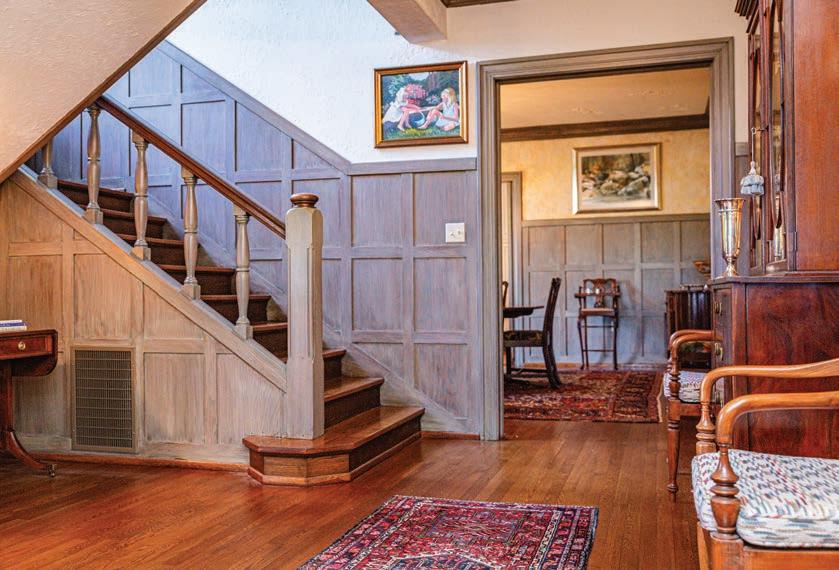
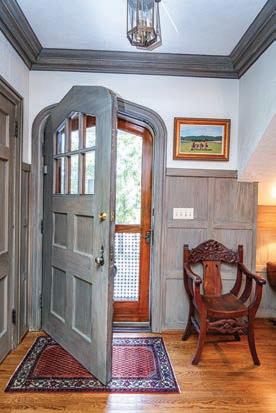
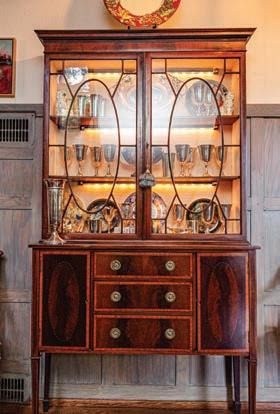
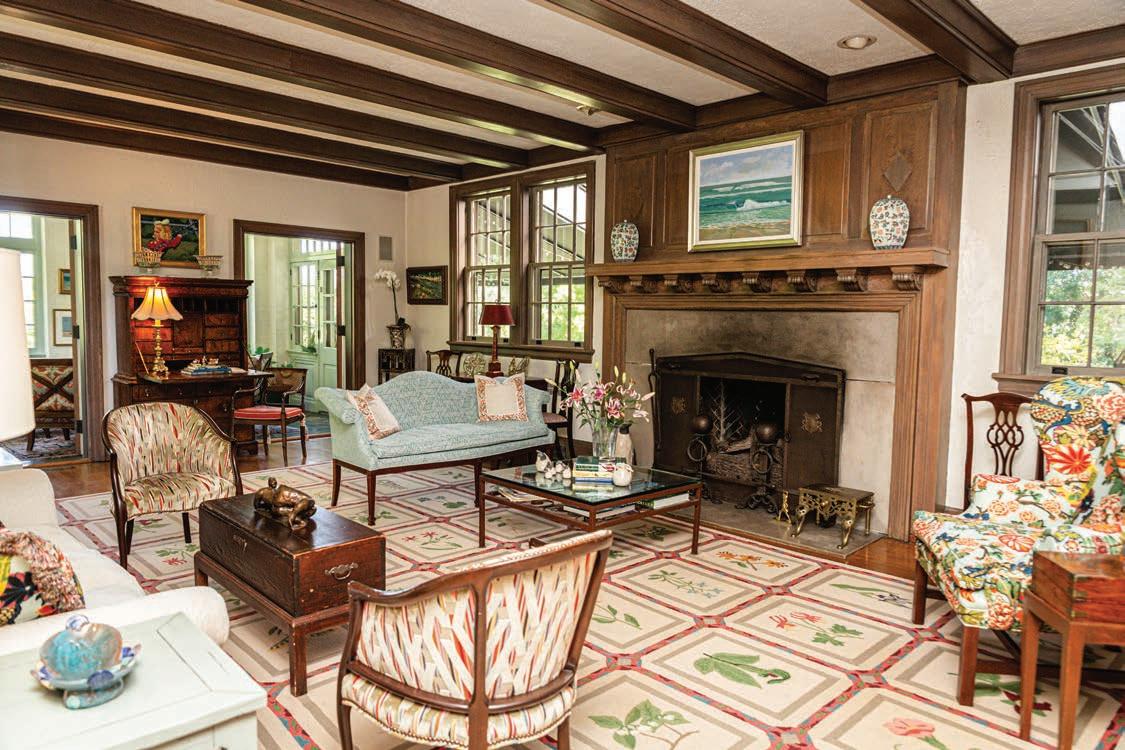

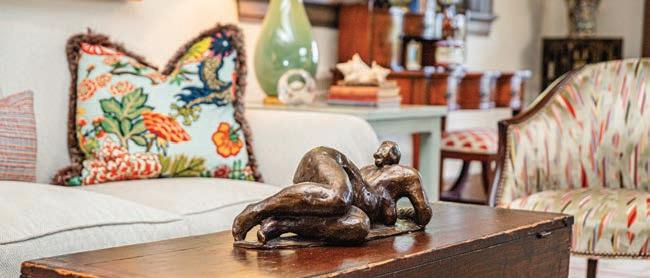
The Tudor-style home, built in 1929 by H.C. Neren, contains many of its original elements. The living room inset fireplace screen, andirons and tools were custom made for the home in Germany. Their design and fine details reflect intricate German craftsmanship. The fireplace screen arches perfectly into the stone arch of the original fireplace. The circle shapes on the andirons are repeated on the fireplace tools. A large hanging light fixture in the front staircase is original to the home and matches the fireplace screen and andiron set.
The Ballengers and their daughters moved into this home just before Thanksgiving in 1994. Previously, it was the Crockett home for 30 years. Jack trained under Dr. Charles (Buck) Crockett, who was well-known at the hospital for the “new resident welcome dinner” that he and Mrs. Crockett hosted each summer. Jack and Winn attended this annual event many times and knew the house well.
“We never thought we would move from our Cornwallis home,” says Winn, “but when we heard this house would be for sale, we jumped at the chance to move here.” Mickey Nelson, an interior designer and antique collector, walked the house with the Ballengers and brainstormed what they could do.
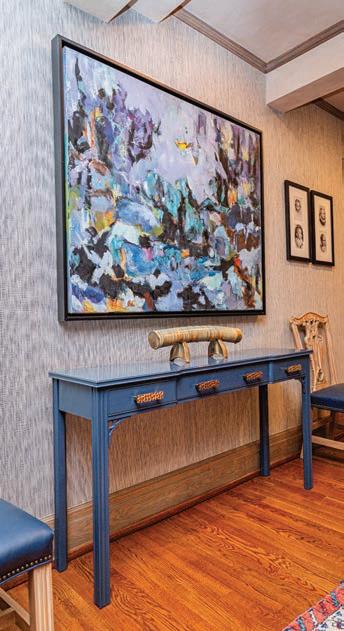


The original layout and walls were kept in the front formal rooms. In the back, the porte-cochère was enclosed to enlarge the den. This created room to build a large stone fireplace with an arch that mimics the style of the original living room fireplace and other arched doorways in the house. They added built-in cabinets and bookcases on either side. These
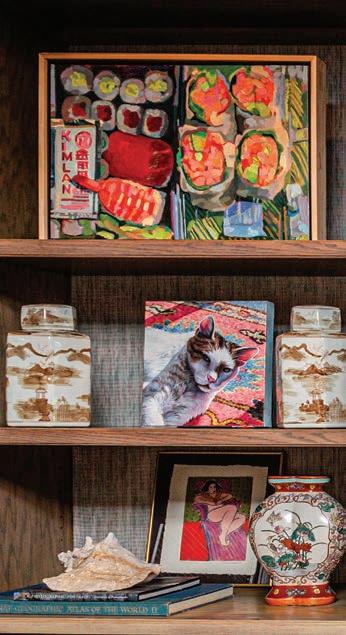
shelves display books, keepsakes and paintings: An abstract by Peyton Kline, two pieces by Ann Glover and two “Best in Show,” a Mary Boxley Bullington cow collage and a cat by Ann Bernard. These last two pieces are special, Winn notes, “I was very involved in ‘Best in Show’ for many years.” It was a collaboration between The Market Gallery and the SPCA to raise money for the shelter.



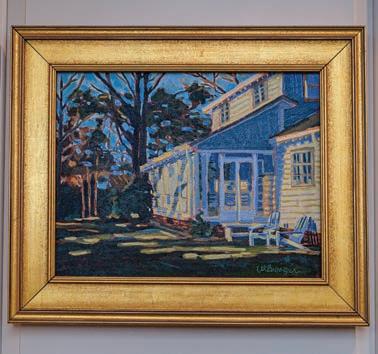

An artist’s eye Winn loves art and their art collection is astounding. She and Jack started buying art in 1975 and continue today. Winn says, “we buy a piece here, a piece there.” She buys a work because she “loves it,” then they find a place for it in their home. An artist herself, Winn majored in art and math in college, so there are many of Winn’s pieces hanging throughout the home. Her landscape resides on the front porch, and two polo scenes she painted for the Roanoke Symphony Polo Match program covers hang in the front hall. A painting of their two girls when they were young is in the front stairwell.
Winn paints in oil most of the time. She was involved in the Market Gallery and studied art with other local artists across the years. She took painting lessons from Kathy Lu, drawing classes with Ann Hale, painting classes with Ann Glover and acrylics with Peyton Kline. Winn still exhibits at Open Studios each year.
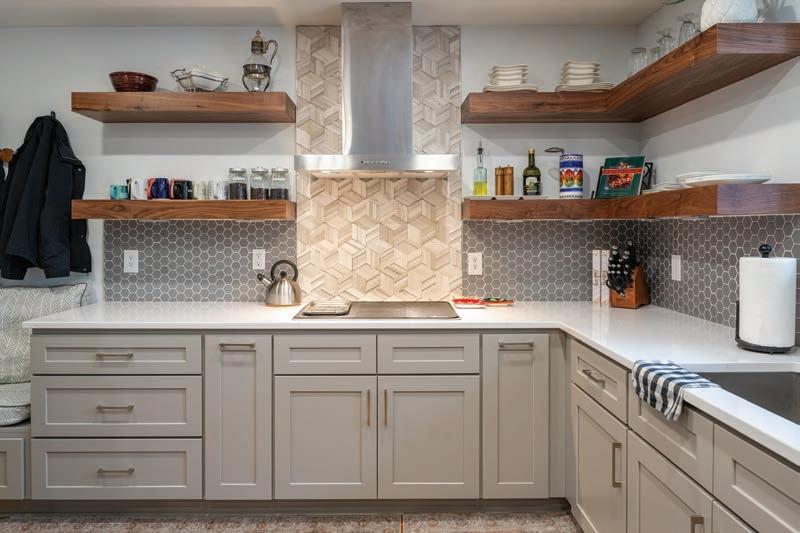



Winn has an artist’s eye and studiously curates her home; her art placement is natural and thoughtful. Winn “collects things that strike me,” like the penguins and sea turtles she found in a gallery in the Biltmore Village. A group of these sea turtles sit on her living room coffee table. Winn found these ceramics as well as the large penguin that stands guard by the fireplace while traveling with college friends. The rug under the coffee table, a series of wildflowers, was a collaborative composition designed by Winn and Mickey Nelson. Recently, Designer Elaine Stephenson chose new fabrics for the sofas and chairs that beautifully unite the art and the antiques. The patterns and soft colors give a soothing palette to the living room and carries them into the sunroom. Over the living room couch, a large painting by Maryann Harman of Blacksburg creates a striking focal point. Stephenson helped Winn choose new wallpaper, small tables and rugs to refresh the first floor. The ceiling in the sunroom is a unique trompe l’oeil painted by Joan Henley. It is as if the large oak tree branch comes through the sunroom’s windows and brushes across the ceiling.
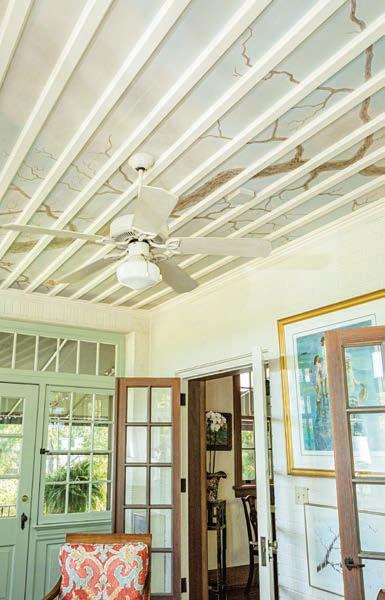

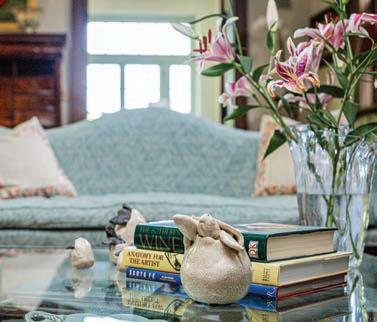
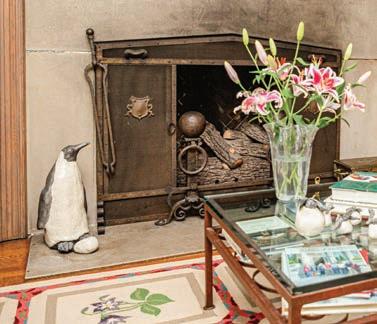
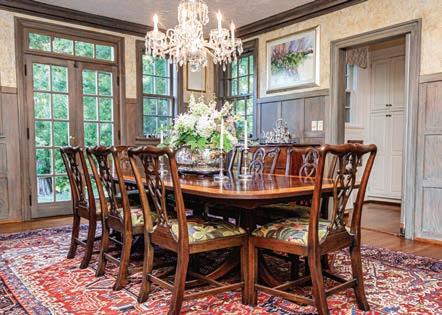
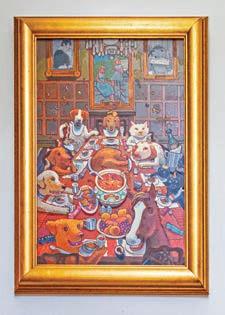
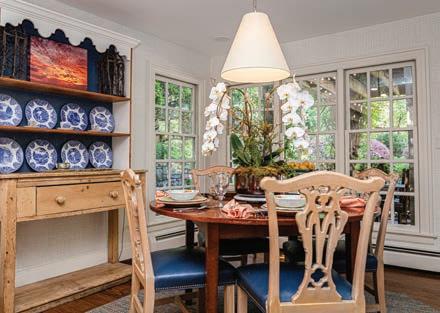
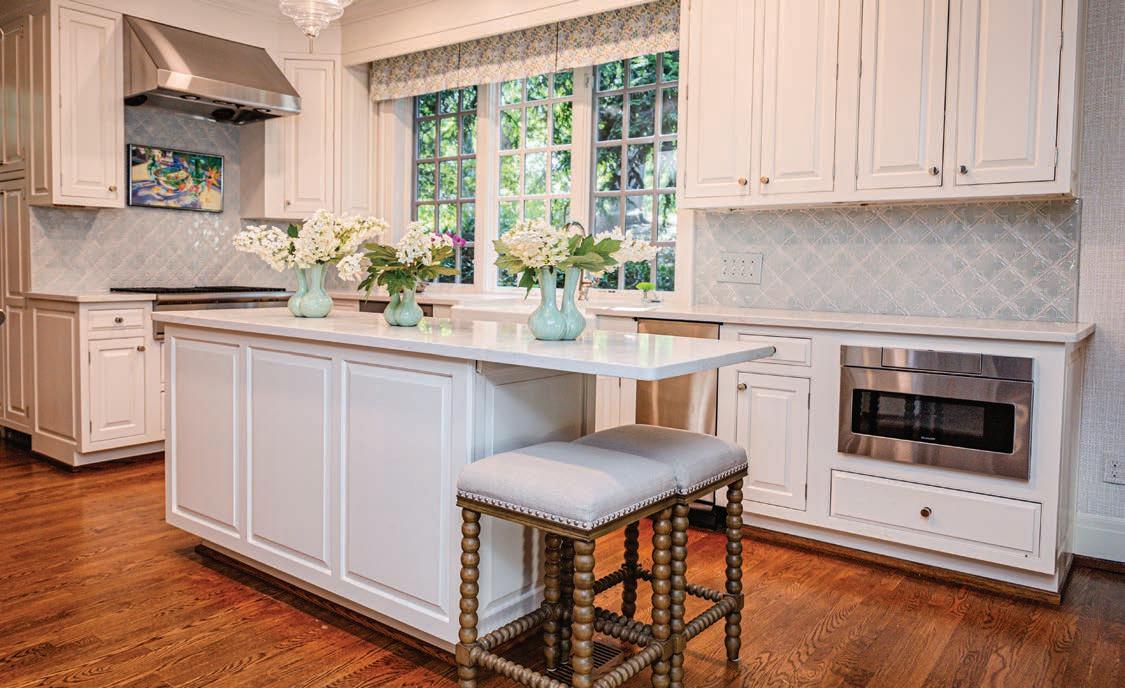
In the dining room, Mickey’s vision improved the flow of the house. Many years ago, he suggested they remove the glass doors that separated the front hall from the dining room and install the glass doors in the dining room’s front wall, so the dining room opens to the front patio. This idea was unusual, but it worked beautifully. Using interior glass doors as exterior ones was unique, and it made the house “really flow,” Winn says.
The crystal chandelier anchors the large inlaid dining table. Gorgeous carved-back antique chairs encircle the table. A highchair with a matching carved back sits on one wall, ready for family dinners with the grandchildren. Two large Kathy Lu watercolors hang over the highchair and dining chest of drawers. Their soothing colors balance the silver candlesticks, green-and-white oyster plates and compote full of hydrangeas from the garden.
In the back hall, a unique painting was designed as a birthday gift for Jack. Winn commissioned Ann Glover to paint a
portrait of all their pets seated in chairs at their dining room as if gathered for Thanksgiving dinner. Ann brought this piece to life so that the spirit of each pet, past and present, gleams from the canvas. They are all there – the hermit crab, the hamster, various dogs and cats, the boa constrictor, Currie’s horse, Ann’s dog, and looking down from the wall, hanging on either side of a portrait of their daughters, are Jack’s cat and dog that he had as a child. What a gift to see this painting hanging over the coat rack by the backstairs every day.
In the kitchen, they removed the old butler pantry and opened the walls. Stephenson chose a tile backsplash in a soft blue to highlight the white cabinets. An Ann Glover piece hangs over the stove. A Peyton Kline painting of daffodils from her yard hangs in the back corner. On the other side of the kitchen, they bumped out the back wall of the house to create a breakfast room. The back wall is now a row of windows, which provides great light. By the back door, a Mary Boxley Bullington work of clay pots full of flowers hangs on the wall.

Outside the glass back door, there is a large back patio with a wooden pergola covered in wisteria. The twisted vines provide an artist detail. As Jeff Kinzie of Seven Oaks Landscape & Hardscape notes, “The mature wisteria on the pergola in the back patio is beautiful and creates a great outdoor room, especially when the wisteria is in full bloom.” The brick floor in a basketweave pattern and wooden seating makes this spot warm and inviting. Across the stone driveway is a two-car garage. Built in the Tudor-style, it matches the home seamlessly. Winn’s studio is above the garage and overlooks the lower gardens: an inspirational spot to paint.
The side yard off the driveway is terraced with steps that entice you into the heavily treed gardens. There, a gazebo expands the outdoor living space with inviting wood armchairs and pots of blooming flowers. Below the terraced gardens,

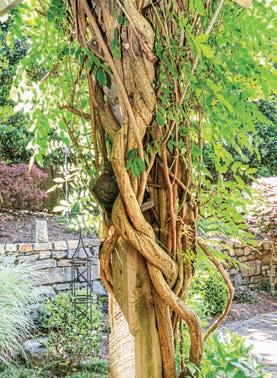
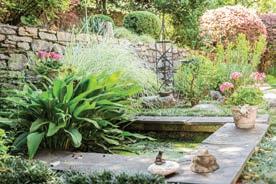
there are ponds, native trees and shrubs, and paths lined with Lenten roses. Seven Oaks landscape crews keep the grounds in meticulous shape for the Ballengers. Kinzie is proud of their effort: “Our maintenance crews work hard to keep weeds out of the extensive ground cover, so there is a nice uniform carpet of plant material. Also, pruning is very important in getting the best blooms from their azaleas and rhododendrons. Winn likes a natural look that requires hand pruning. It’s more time consuming but worth the effort.”
The front lawn with mature trees gracing the steep hill is legendary. During the first snow of December 1994, the Ballengers awoke to a yard full of children sledding down their front yard. It is a custom that all four families who lived here embrace. From the Nerens, McIntires, Crocketts to now the Ballengers, this is a fun house and a happy home that they feel blessed to oversee. It is true: the best houses evolve over time. ✦


If you are thinking about a kitchen redo, fabulous outdoor living space or getting your main suite on the main floor, now is the time to start planning. Residential construction has been extremely busy and getting started early is the perfect way to get your project in line and on the calendar for Spring.
At Building Specialists, we have the team to get the ball rolling. We have 50 years in the industry and hundreds of happy homeowners. Call us for a free consultation to discuss how together, we can get you ready for your next exciting home improvement project!















Since 1921, four generations of the Bass family have cultivated their Campbell County land, and today, Bass Sod Farm delivers premium turfgrass for residential and commercial clients. What began as 200 acres of farmland has grown to more than 2,100 acres, reflecting a century of dedication and innovation.
In 2005, Bass Sod Farm transitioned to sod production, and today produces 250 acres of Fescue, Bermuda and Zeon Zoysia. Walter Bass Jr. was recognized as the 2024 Sunbelt Farmer of the Year for Virginia. This award acknowledges excellence in farming across the Southeast. The Bass family’s entrepreneurial spirit and contributions to their community have earned them high regard.




A perfect, thick lawn, athletic field or golf green — instantly! The team at Bass Sod Farm, led by W.B. and Allen Bass:
■ Harvests sod to order — the rolled sod unfurls like a beautiful carpet on your lawn.
■ Ensures that you receive fresh, high-quality turfgrass.
■ Delivers to your location or schedules a pick-up time for you.
■ Installs the grass on your prepared yard.
■ Offers custom-blended bagged seed.
■ Grows sod sprigs in Bermuda and Zoysia grasses. These sprigs are thin 3- to 6-inch pieces of grass stems or runners without soil



BY CHRISTINA MOORE

As winter releases its grip and warmer days return, homeowners are preparing to wake up their lawns. Spring means longer days, blossoming landscapes and — let’s be honest — a lot of yard work. But this year’s innovations in lawn care technology are making yard maintenance smarter and more efficient than ever, whether you prefer traditional gas-powered equipment or the latest high-tech solutions.
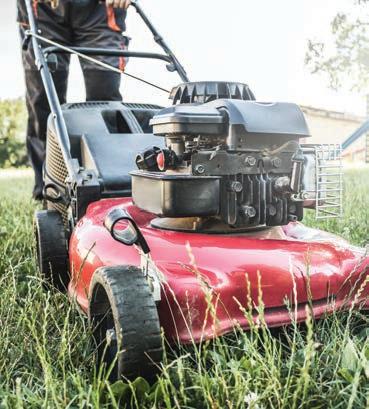

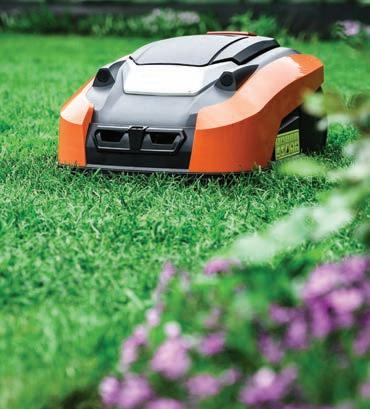
The biggest buzz in lawn care centers is around smart technology integration. Gas mowers are getting tech upgrades too; newer models from Honda and Toro feature electronic fuel injection (EFI) systems that improve fuel efficiency and provide
thickness and height-sensing technology that maintains optimal cutting performance. Some models even connect to smartphone apps that track mowing patterns and suggest optimal schedules based on weather forecasts.
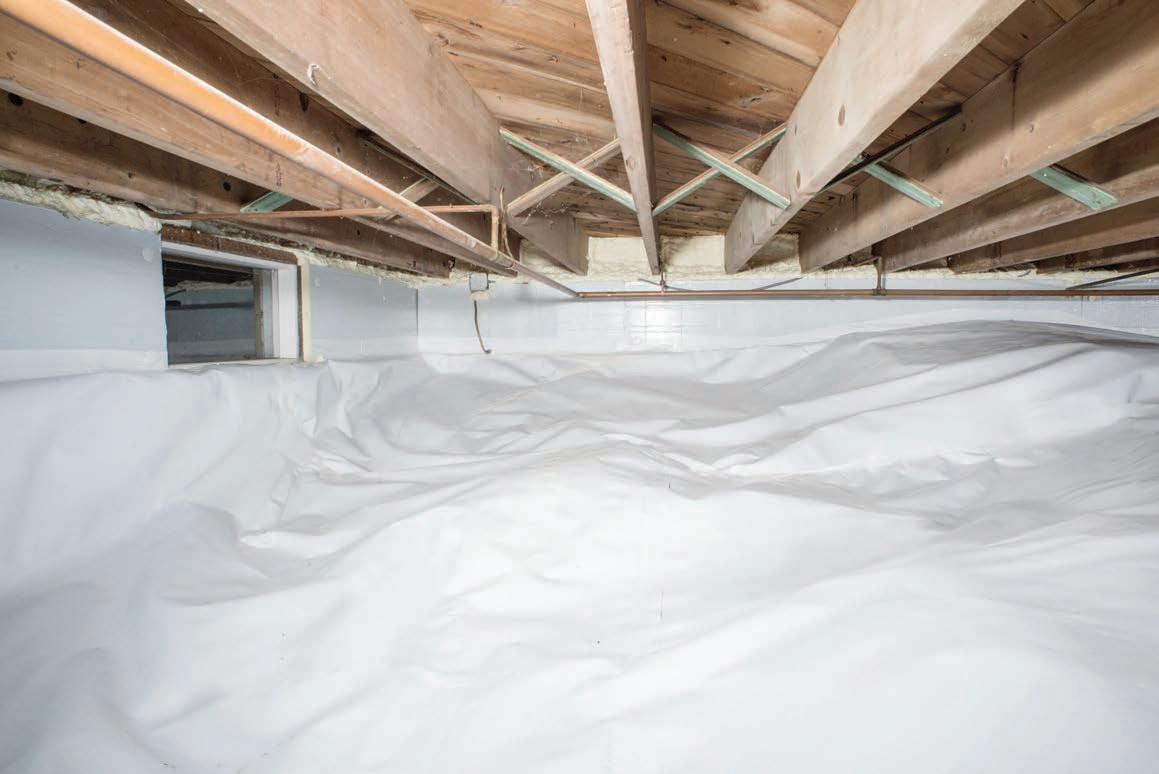






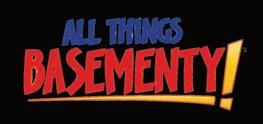

If you’re in the market for a new mower, these tips from Popular Mechanics can help guide your purchase:
n Push or riding mower? If your yard is more than a quarter acre in size, you probably want to shop for a riding mower. If you have more than 2 acres, you might want to consider a zero-turn model. If you have a small but hilly yard, a self-propelled mower can help you get the job done.
n Functions. Mowers can do more than cut grass. A two-function mower mulches and bags; a three-function machine bags, mulches and side discharges.
n Size of deck. A larger deck allows you to cut more grass at once. Usually, decks range from 42 to 54 inches. What size do you need? Divide the mower deck size by 12 to get an approximation of the acreage the mower can handle. For example, a mower with a 54-inch deck can mow up to 4.5 acres.
n Front, rear or allwheel drive. If you have level ground and a lot of obstacles, choose front-wheel drive. Rearwheel drive works best for uphill mowing and sidehill mowing. All-wheel drive is built for sidehill mowing, steep uphill and downhill mowing.



Precision tools
Today’s string trimmers and edgers are evolving beyond basic cutting tools. New gas-powered models feature computercontrolled engines that optimize fuel consumption and power output, while the latest battery-powered options use brushless motors with smart power management, automatically adjusting power based on the task. Multi-head systems are trending, where one power unit connects to various attachments, saving both storage space and money.
Perhaps the most exciting developments are in smart spraying systems for fertilizers and weed control. New precision sprayers use optical sensors to identify weed species and adjust application rates automatically, reducing chemical waste and improving effectiveness. Some models can even connect to soil moisture sensors to optimize treatment timing.
High-tech helpers
Lawn care is going high-tech with soil analysis tools that connect to your smartphone, providing instant readings of soil pH, moisture and nutrient levels. New aerators combine traditional tining with vibration technology for better soil penetration while requiring less effort.

For leaf cleanup, the latest blowers feature variable-speed triggers with cruise control and even noise-reducing technology that maintains power while cutting decibel levels.
Another emerging trend is the integration of tool tracking and management systems. Many new professional-grade tools come with builtin Bluetooth tracking, helping you monitor usage hours, maintenance schedules and even their location if misplaced.
When shopping for any lawn equipment, consider how these new features might benefit your specific situation. While smart technology can make lawn care easier, reliable power and performance should still be your primary concerns. Gas-powered tools continue to offer unmatched power and runtime, while electric options keep getting stronger and more capable.
Remember — whether you choose traditional equipment or the latest smart tools, quality matters most. Watch for end-of-season sales when retailers often discount both current models and last year’s technology. With the right combination of tools, you can create a beautiful, wellmaintained lawn while taking advantage of the features that make the most sense for your needs. Happy mowing! ✦


BY MITZI BIBLE
Are you still dreaming of a new kitchen? Preparing to send your child off to college or down the wedding aisle?
These are exciting things to look forward to, but they can also become stressful when you don’t know how you’re going to pay for such a major purchase all at once. If you have diligently built up equity in your home, you may be able to borrow cash against your home’s current value and quickly turn those dreams into reality.





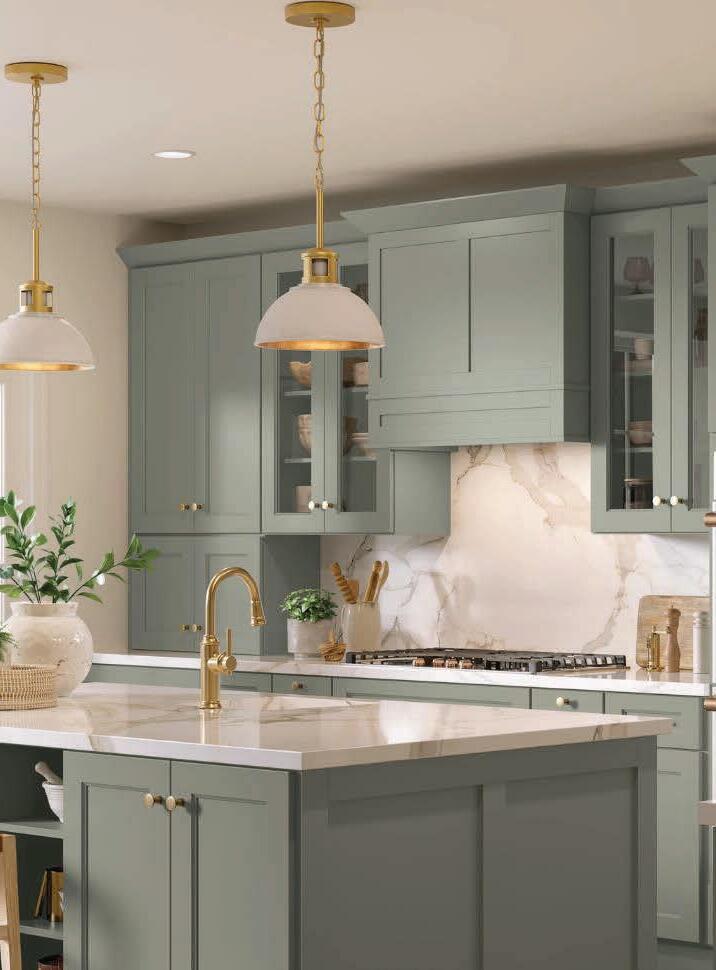


When you’re paying a mortgage, you’re building equity — that’s the value of your home minus the amount you still owe. The longer you chop away at debt, the more equity piles up. Banks or credit unions will lend you money based on that equity (if you meet certain requirements) in two ways: a home equity loan or a home equity line of credit (HELOC).
A home equity loan is paid back with interest at a fixed rate based on the length of the term, which is usually much longer than most personal loans offer, even up to 30 years. A HELOC functions much like a credit card. The interest rate is often variable (though typically much lower than other credit options), and it is charged only on the funds that are used.
“For most Americans, the largest asset they have is their home,” says Raf Hurt, Branch Manager at Member One’s Member Service Center in Roanoke. “Our home equity lines of credit or home equity loans are the best tools we have available for members to tap into that asset and receive a low rate.”
Hurt says Member One, with branches throughout the Roanoke Valley and Central Virginia, saw an increase in applications for its home equity products last year.
“We are still seeing a lot of interest in those products … toward renovating their homes, consolidating debt, paying for children’s education, a wedding or once-ina-lifetime vacation, or starting a business. It can be anything.”
Obtaining a home equity loan or HELOC is similar to applying for a mortgage. A full assessment of your finances is required with documentation: your credit score, income, appraisal and a financial statement are obtained before the loan or line of credit is approved. The typical amount lenders will approve is 80 percent of the value of your home (or more with institutional promotions and depending on the term of the loan) less the debt you still owe against it. For example, if your home is appraised at $200,000 and you have $100,000 left on your mortgage, 80 percent of $200,000 is $160,000, then subtract the $100,000 you owe and you could receive a loan or credit limit of $60,000.



Which option is best?
Carrie McConnell, President of Ridge View Bank, with locations in Salem, Roanoke and Smith Mountain Lake, says her bank is helping more customers turn their equity into cash.
“We are typically seeing people who have owned a home for a longer time and have built up that equity over time. But we’re also seeing people who made a substantial payment on an initial investment, or their home has just appreciated quickly,” she says.
While Ridge View offers a traditional HELOC, under that umbrella they also offer separate fixed rate loans up to the amount of your home equity line.
“If you do the fixed rate draw under our HELOC, that’s really if you’re purchasing something big and you want that rate fixed for five years or so.”
For some people, drawing on their home equity is necessitated by a more dire need, like an emergency home repair or even consolidating debt so they can see the light at the end of a long tunnel.
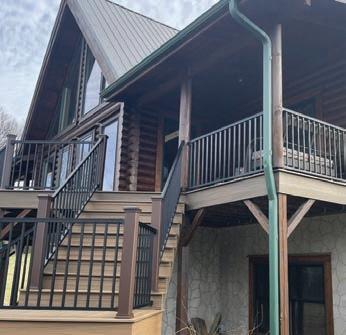


We specialize in the professional installation of windows, doors, decks, gutters, siding and roofing to fit every need and style.
We feature Pella and Andersen replacement windows. Our window installations go the extra mile to preserve your home’s authentic details.
A great window is only as good as its installation, so why trust your installation to an uncertified contractor or worse yet, an uncertified, unlicensed and uninsured installer. Elegant Exteriors installs its windows and doors with its own employees, not subcontractors or piece workers.
Elegant Exteriors by TBS, LLC is a Trex Pro as well an Andersen and Pella certified contractor which means that all of our installations come with a 2-year labor warranty.












Hurt says if you’re looking to make a one-time purchase or have a one-time expense, the home equity loan might be your best option. But his personal favorite is the HELOC, which Member One currently offers at a low fixed rate for the first year (then it moves to the prime rate). You can draw on it up to 10 years; you have 15 years to pay back the remaining balance.
The HELOC is also helpful if you have more than one home project in mind. He says people may tackle their kitchen first and take time to pay down that balance on a HELOC and then in a year’s time start on a bath remodel and draw on the revolving credit.
He says it’s also an attractive way for customers who have excessive mounting debt.
“A lot of people like the option of being able to combine everything into one monthly payment, and because of the terms that we offer, it usually drastically reduces their monthly payment amount so that means they can either apply more money towards the balance to pay it off quicker or they have additional funds to do other things with.”
Members can receive an estimate before they apply. If you’re looking at purchasing an additional home or


investment property, a HELOC can also be more attractive than a first mortgage.
When shopping for home equity products, be sure to ask for special offers and inquire with your tax advisor because some options can potentially reduce your tax liability. Also remember that these options are still secured loans, which means the lender uses the part of your home that you own as collateral, and if you can’t pay it back, you risk going into foreclosure.
While information on these options and even applications are available online, area lenders still open their doors to customers every day.
“We like to invite you in for a consultation to understand what you’re trying to do so we can better advise you on what might be a better route to take,” Hurt says.
McConnell adds, “We pride ourselves on being very accessible. Our lenders will return your call within the day, typically within the hour. There really are no dumb questions. We see clients from all levels and backgrounds of borrowing money … we’re happy to answer any questions.” ✦

HOME Magazine helps your messages reach consumers ready for your products and services. In the fall of 2024, Eastlan Ratings sampled area residents ages 35+ and found HOME to “significantly outperform” the local media market in audience quality and purchasing influence.
NUMBER OF HOME MAGAZINE READERS PER ISSUE
DISTRIBUTION

Targeted direct mail

Mass distribution

Online
AUDIENCE PREFERENCES & PLANS
HOMEOWNERS PREFER LOCAL BUSINESSES
AUDIENCE INTERACTION WITH HOME MAGAZINE
EXCLUSIVE HOME & GARDEN MAGAZINE SINCE



We don’t reach just any audience — we connect with your best customers. Let us help your business soar in 2025!
BY LAUREL FEINMAN

What to do with good stuff you no longer want or need


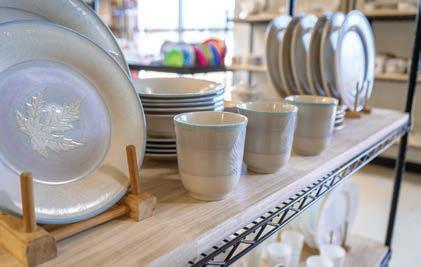

It’s a good problem to have: too much stuff. Decluttering not only clears your space but also offers an opportunity to give back to the community. By rehoming items that no longer suit your life, you extend a helping hand, fostering a sense of community and sustainability. This guide will walk you through the best practices for donating your items to charity thrift shops and relief organizations, ensuring your contributions positively impact your community.
Criteria for donating items
Before donating, keep these criteria in mind to ensure your items are accepted:
n Clean: Items should be free of dirt, stains and odors.
n Functional: Appliances and electronics must work properly and include all necessary parts.
n Whole: Items should not be broken, damaged or missing significant pieces.
n In style: Thrift shops often prefer current styles (less than two years old), especially for clothing.
n In season: Donate items appropriate for the season to help shops manage their inventory effectively.
Quick tip: If you’re donating any breakable items, be sure to label the box as fragile. Use bubble wrap and paper to keep items safe and to protect those who will be sorting donations.

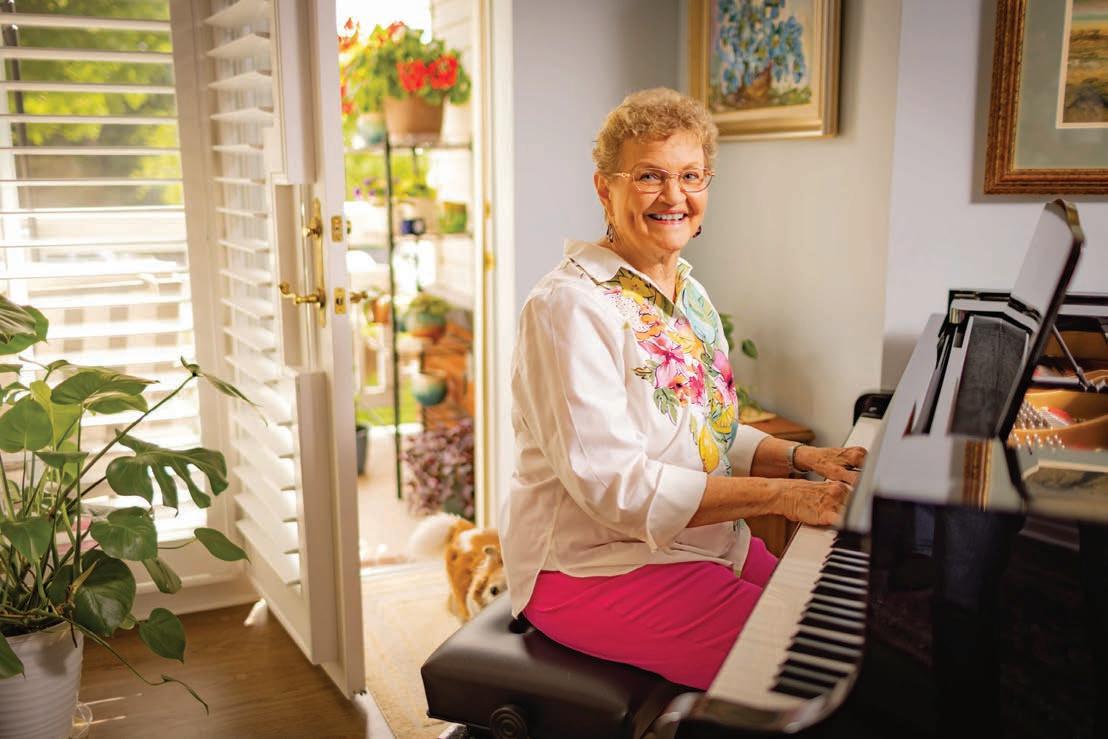


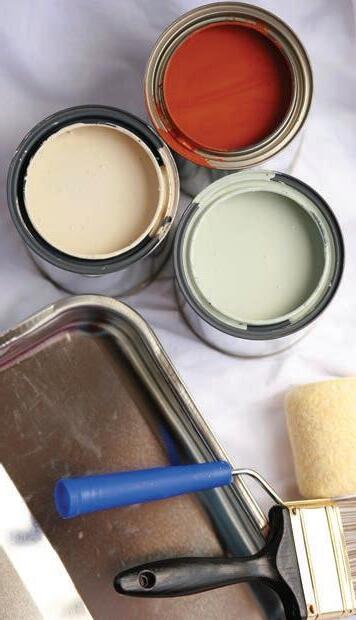



Items generally not accepted
Many thrift shops do not accept certain items, including:
n Open/used personal care items: Cosmetics and fragrances are typically rejected for health reasons.
n Outdated electronics: Non-functioning or obsolete items should be recycled instead.
n Often-recalled items: Most donation centers do not accept children’s cribs, strollers, car seats and other infant furniture.
n Furniture with structural issues: Broken or unsafe furniture is often not accepted.
n Hazardous materials: Items like paint or sharp objects are typically refused.
n Kerosene and gas heaters
n Mattresses and bed pillows: Hygiene concerns usually prevent their acceptance.
n Large appliances: Some shops cannot accommodate large items; call ahead to check.
n Lawn equipment
n Guns and weapons
Impact of charity thrift stores
Charity thrift stores support a variety of causes including:
n Job training and employment: Organizations like Goodwill offer job training and placement services.
n Homelessness and housing: The Salvation Army and Habitat for Humanity help fund housing support programs.
n Health and wellness: Some stores support medical research and community health initiatives.
n Youth and education: Many charities fund educational programs for at-risk youth.
n Animal welfare: Thrift stores run by animal shelters raise funds for animal care.
n Disaster relief: Some stores contribute to emergency relief efforts.
These charities rely on donations and profits from their thrift stores to sustain essential services, making your donations a meaningful way to support community initiatives.
Shopping at thrift shops and nonprofits has become an increasingly popular way to promote sustainability. See our article on budget-friendly design sourcing on page 30 Recycling gently used home goods, clothing and shoes cuts down on waste in landfills and gives these materials a second life. And bonus — you can save a little money for higher quality new purchases.



Here are some options for donating your items:
n Goodwill and Salvation Army: Accept in-season clothing, household goods and furniture in good condition.
n Habitat for Humanity Re-Store: Welcomes home improvement materials and working appliances.
n Local shelters: Accept clothing, unopened hygiene products and bedding.
n Charity thrift shops: Prefer in-season items to help manage inventory.
n Libraries, community centers and schools: Call ahead to see if they accept donations.
n Online platforms: Freecycle, Facebook Marketplace and others allow you to give items away locally.
n Curb donations: Leave items on the curb with a “FREE” sign.
Before leaving any items, double-check them to ensure you haven’t left behind valuables like jewelry or important documents.


Bring a whole new look to your kitchen without having the mess and expense of ripping out your existing cabinets.
Whether you want a warm, traditional look or a modern, two-toned style to your cabinets, N-Hance will deliver a long-lasting, quality finish.













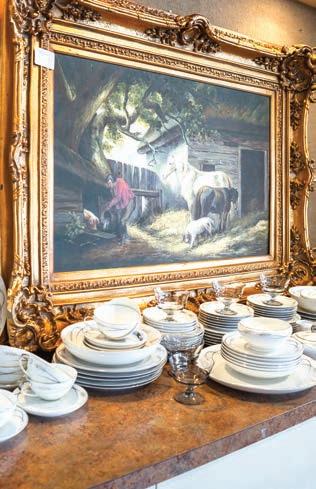
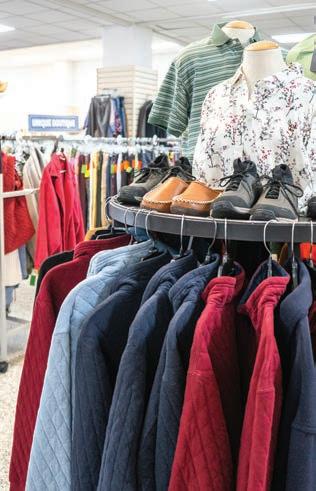
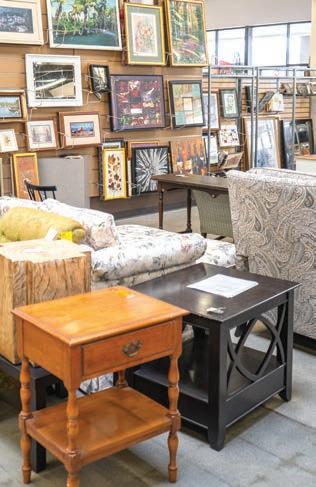

We live in a generous-minded, supportive community with many avenues to provide gently-loved goods to those in need. Here is a list of popular charity thrift shops in the Roanoke area:
n Rescue Mission of Roanoke: Offers multiple services for those in need. (421 4th Street SE)
n 2nd Helpings Shop and Gallery: Benefits Rescue Mission of Roanoke. (1502 Williamson Road NE)
n 2nd Helpings Thrift: Supports Rescue Mission of Roanoke. (3425 Orange Avenue NE)
n Habitat Re-Store: Accepts home improvement items. (3435 Melrose Avenue NW)
n Salvation Army Family Store: Supports national relief efforts. (5511 Williamson Road)
n The Discovery Shop: Supports the American Cancer Society. (3723 Franklin Road SW)
n Goodwill Store & Donation Center: Multiple locations; search online for the closest center.
In summary, rehoming your gently used items not only helps declutter your home but also plays a vital role in supporting community organizations and charitable causes. By donating clean, functional and seasonally appropriate items, you ensure that your contributions make a meaningful difference to those in need. Embrace the opportunity to give back, knowing that your thoughtful donations can positively impact lives within your community. ✦




At Dynamic Promo Solutions, we pride ourselves on exceptional communication, fast turnaround times, and high-quality products. Whether you’re a small business, a large corporation, or a major university, we offer personalized service and expert solutions tailored to your unique needs. We take the time to truly understand your goals and provide custom support every step of the way, going the distance to set ourselves apart from the competition. With upfront pricing, no hidden charges, and FREE web stores for easy merchandise and fundraiser management, we ensure your projects run smoothly. Let us show you how our personal service, commitment to quality and efficiency can elevate your next promotion. Contact us today to experience the DPS Difference!





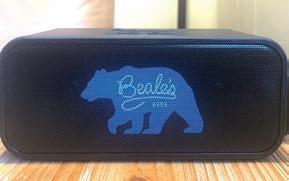



During Historic Garden Week, come tour three private homes and a 4-acre garden, offering majestic views in lush suburban and rural settings minutes from Roanoke’s city center. The homes feature unique architectural styles, complemented by fabulous outdoor spaces. Distinctive attributes in each home enhance the space while reflecting the homeowner’s lifestyle – al fresco dining tables, a greenhouse and kitchen garden, a flower design workshop, bee hives and a pollinator garden, a pool and patios that invite relaxation.
Owner: Mary Ann Coleman
Constructed by Bench Mark Builders in 2008, Camellia Cottage is a sustainably-built, energy-efficient, Craftsman-style home located on the ridge in a prestigious neighborhood known as The Preserve at Two Ford. Landscaping in front features a camellia, native plantings, and hand-chiseled stone walls and walkways. A courtyard garden with stone paths blends harmoniously with preserved green space located at the rear of the property. Other notable features throughout the main level include a primary bedroom with a cherry-accented coffered ceiling, a lavish primary bath with travertine marble floors and a home office with built-in file cabinets. Entertaining areas on the terrace level include a home theater and wine cellar. The owner’s extensive art collection — collected primarily from Bennett Gallery in Knoxville, Tenn. — ranges from oil landscapes and hand-blown glass guineas to Santa Fe-inspired statuary and a twig-art wall hanging.
Owner: Amarilis S. Childress
Sitting on 14 acres with mountain vistas, 4 acres of gardens surround a beautiful yellow stucco home with a red standing seam metal roof. Mature shade trees overlook the parking area that fronts the home. In front of the home, a large patio provides chairs for relaxing and dining. Off the patio, pathways connect the garden rooms. There are beds of iris and daffodils, columbine, phlox, goldenrod, coreopsis, daisies, baptisia, lavender and Lenten roses. Planted with many native flowers, trees and shrubs, the homeowner created a gardener’s dream. Last on tour in 2005, it is a treat to visit to see the gracious outdoor living on this mountain top.
Owners: Craig and Becky Balzer
Designed by the homeowners, a noted architect and a master gardener, the Balzer home is nestled in hardwood and forested growth. Offering breathtaking mountain vistas, it also features a thoughtfully designed greenhouse and a dedicated floral design space. The massive living room offers floor-to-ceiling windows with views. Exterior walls along the kitchen and the dining room feature venting windows that let breezes in but keep rain outside. A cedar dining table and chairs offer al fresco dining or early morning coffee. Visitors are welcome to learn and linger from the vegetable garden to the working beehives. Pollinator gardens, lemon trees in large pots and the mix of flagstone patios with grassy areas lend a Mediterranean ambiance. Down the hill, a bridge to the pond offers a swim platform, chairs for relaxing and a fishing cottage.
ROANOKE TOUR
Saturday, May 3, 2025 10 am to 4 pm

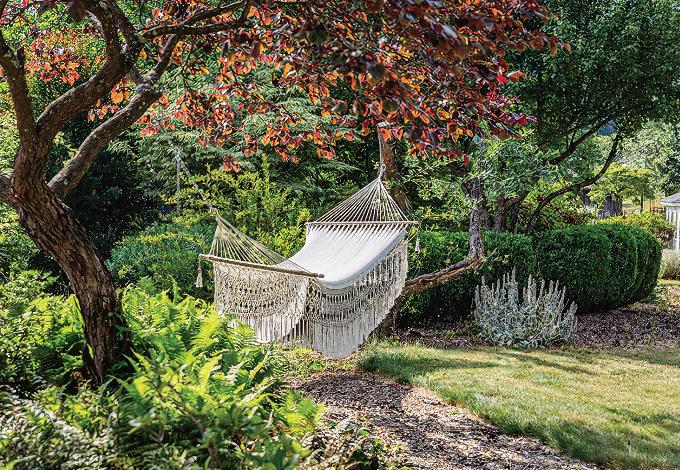
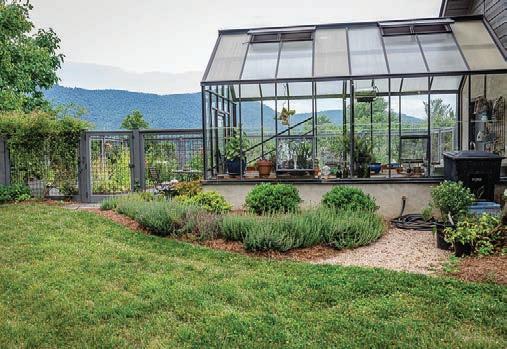
Nestled on a rolling hillside, this contemporary residence, completed by Family Builders in 2010, offers breathtaking views. The creative vision of architect Husain Alam and interior decorator Susan Cadman marries modern design with natural elegance. The main living level follows an openconcept layout enhanced by high ceilings and expansive windows that fill the interior with natural light. The owner’s diverse collection of paintings, many by well-known local artists such as Greg Osterhaus, Dianne Patton and Brett LaGue, provides a seamless connection between the living spaces upstairs. Artful light fixtures also function as focal points in many of the home’s rooms, including the kitchen’s interlocking spheres designed by Mr. Brown London. The owner’s home office displays artwork by nationally recognized artist Andrea J. Peters. Here, visitors will also find “The Swimmer,” a recently acquired painting by Jessica Lee Ives that explores the interplay of light and motion as a figure moves through water. Stepping outside, a freeform pool, expansive patio and spacious side lawn provide an ideal space for recreation and family gatherings. Butterfly-friendly plantings provide bursts of color to the surrounding landscape of evergreen borders and mature trees. ✦

Tickets are $30 in advance for three properties (6549 Masons View Lane, 8480 and 8380 Poplar Springs Lane) and $15 in advance for 6045 Roycroft Drive. Tickets are available online or locally at Townside Gardens (cash or check only). Day-of tickets ($40 and $20) will be sold online and at the tour headquarters (Church of the Holy Spirit, 6011 Merriman Road, Roanoke). Light refreshments will be available poolside at the Snyder home. Plein Air Artists will be located at several properties. This is a shuttle-only tour. Park at the tour headquarters, and ride a shuttle to each property. Walking shoes are highly recommended. For tickets and more information, visit vagardenweek.org.





Recently I heard that 2025 was The Year of the Snake in the Chinese Zodiac. I wondered, “What in the world?” How could anyone see anything valuable in a snake. It turns out that snakes have solid attributes. Who knew?
For starters, it is technically a wood snake, which sounds much better. At least I can acquire an image of something immobile (a carved figurine on a shelf) rather than wiggling and alive. A wood snake’s human characteristics are charismatic, intelligent and artistic; they exhibit cunning and mysterious personalities. As you would expect, snakes are cautious, introverted observers. Their armor conceals abundant sensitivity, wisdom and passion that surprises their rare confidants.
I still plan to weed carefully in my garden this year. That won’t be for a while though as another animal we’ve humanized, the groundhog, aka Punxsutawney Phil, our winter weatherman, saw his shadow in February. Since he added six more weeks of winter, the ground is just now coming out of hibernation, like the snakes. Everything is finally a verdant green and smells fresh. Now it is planting time, a jubilant tradition — no weeds yet.
According to folklore, the Year of the Snake, presents strong opportunities for career and financial growth. Those are mostly inside activities, but hopefully there are windows in those busy worlds. In any event, stay focused, take necessary precautions and balance challenges with joyful events. We all delight in the possibilities of happy spring times — packing picnics, walking in your neighborhood, heading to outdoor music venues or feeding the birds.
Speaking of joyful experiences, I relish stepping outside in our breathtaking spring weather. In May, there is a fantastic music festival — Rooster Walk (roosterwalk.com). Put it on your calendar. There is nothing better than hanging outside, listening to great bands.
In the meantime, treasure these bright, cool days ahead. Dig an herb bed, fill pots with colorful blooms and watch the squirrels’ and birds’ antics in the garden. When they scutter and hop in the yard the garden comes alive. Inside, we might want to emulate another type of animal: birds. They focus on feathering their nests and feeding their young. Spring is the perfect time of year to do just that.
